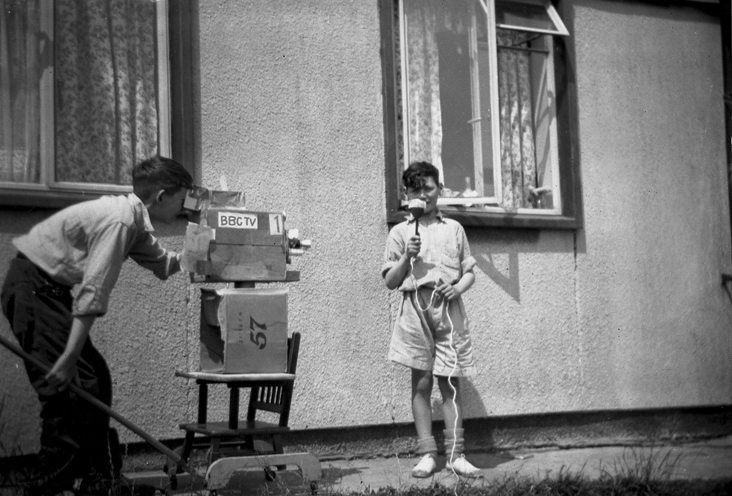
Nothing if not enterprising – and not bad for a 10 year old with limited resources: a pretty accurate reproduction (if you discount the Heinz soup box) of a standard 4 lens PYE turret camera as used in BBC studios at the time – and a microphone made from one of my mother’s wooden mixing spoons. I always knew I would end up in television – or possibly recycling.
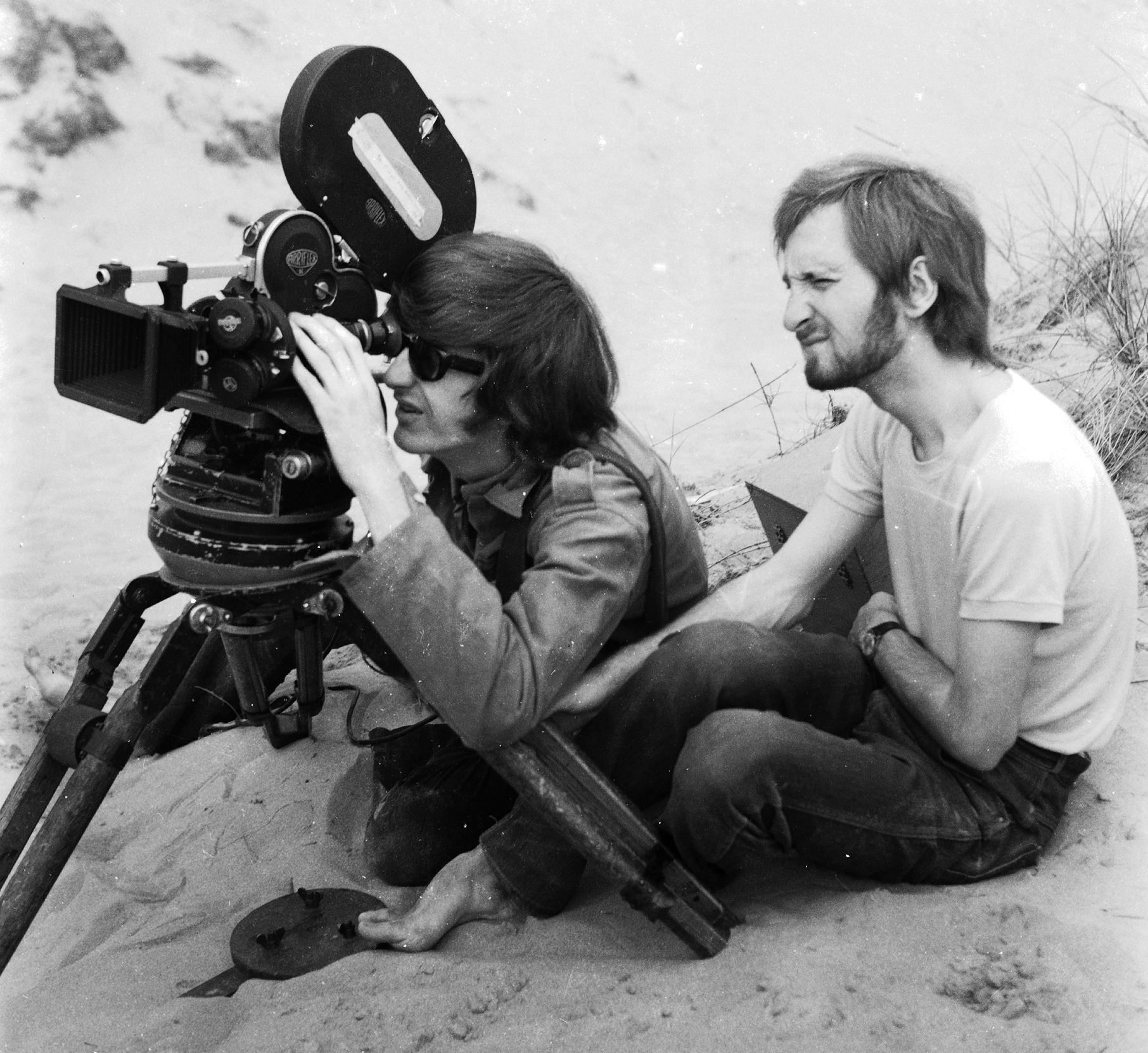
In 1970 I was recruited by an ex art college colleague, Chris Evans (right in the picture) to work with the degree course students on a film being made in Gower – where I then lived. I was originally hired as a sort of fixer/runner for the location unit but after a crash course in 16mm camera technique including the dark art of magazine loading, I graduated to camera assistant, and briefly, with an ancient Bolex RX16, to second camera op.
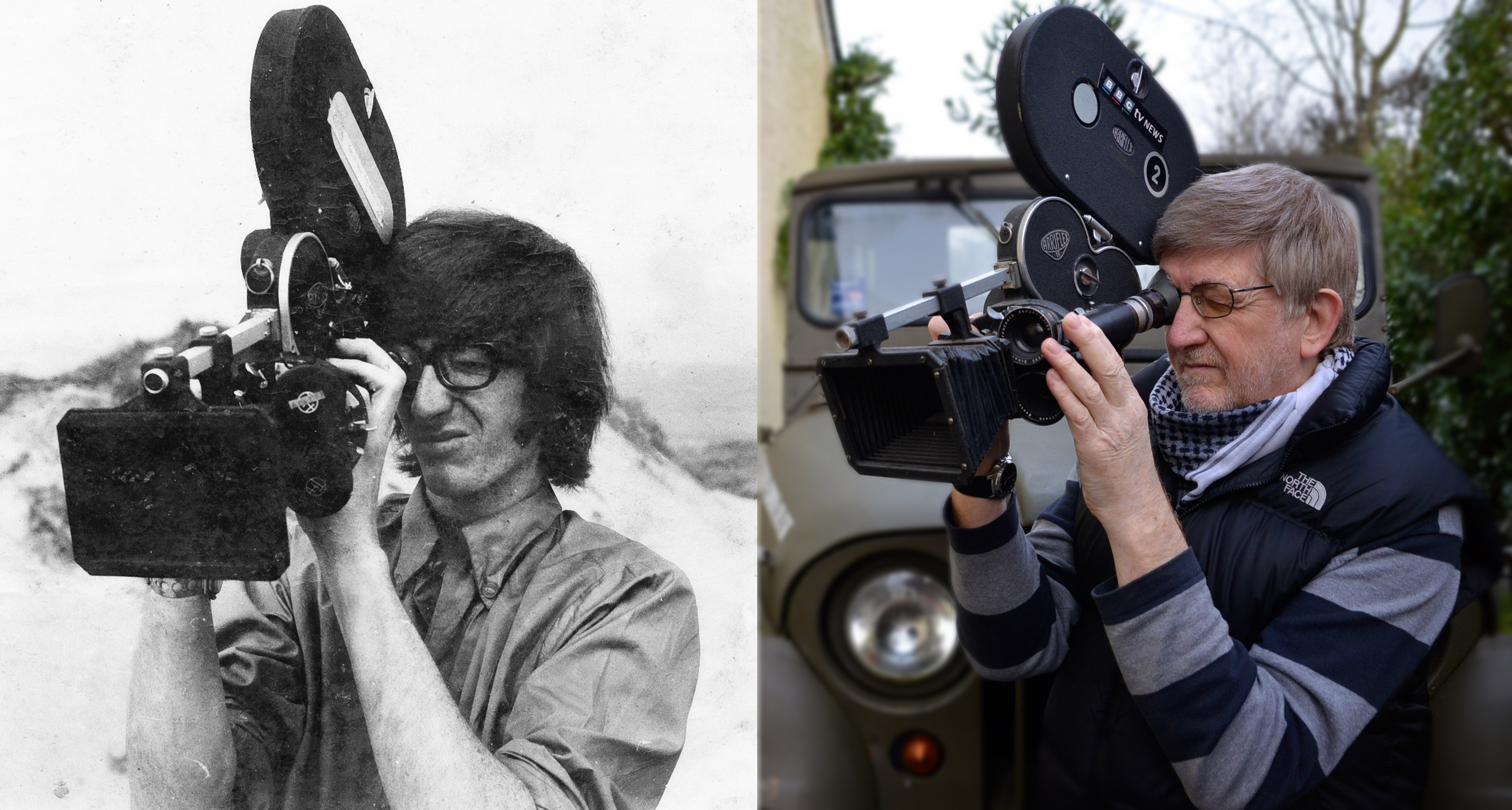
In the 1970 B&W pic I’m standing on Oxwich beach in Gower using Bristol Film School’s Arriflex 16ST 16mm movie camera and in the colour pic taken 45 years later I have my very own Arri 16ST. An antique in many ways, it would still work faultlessly given a roll of film and a 14.5 volt battery.
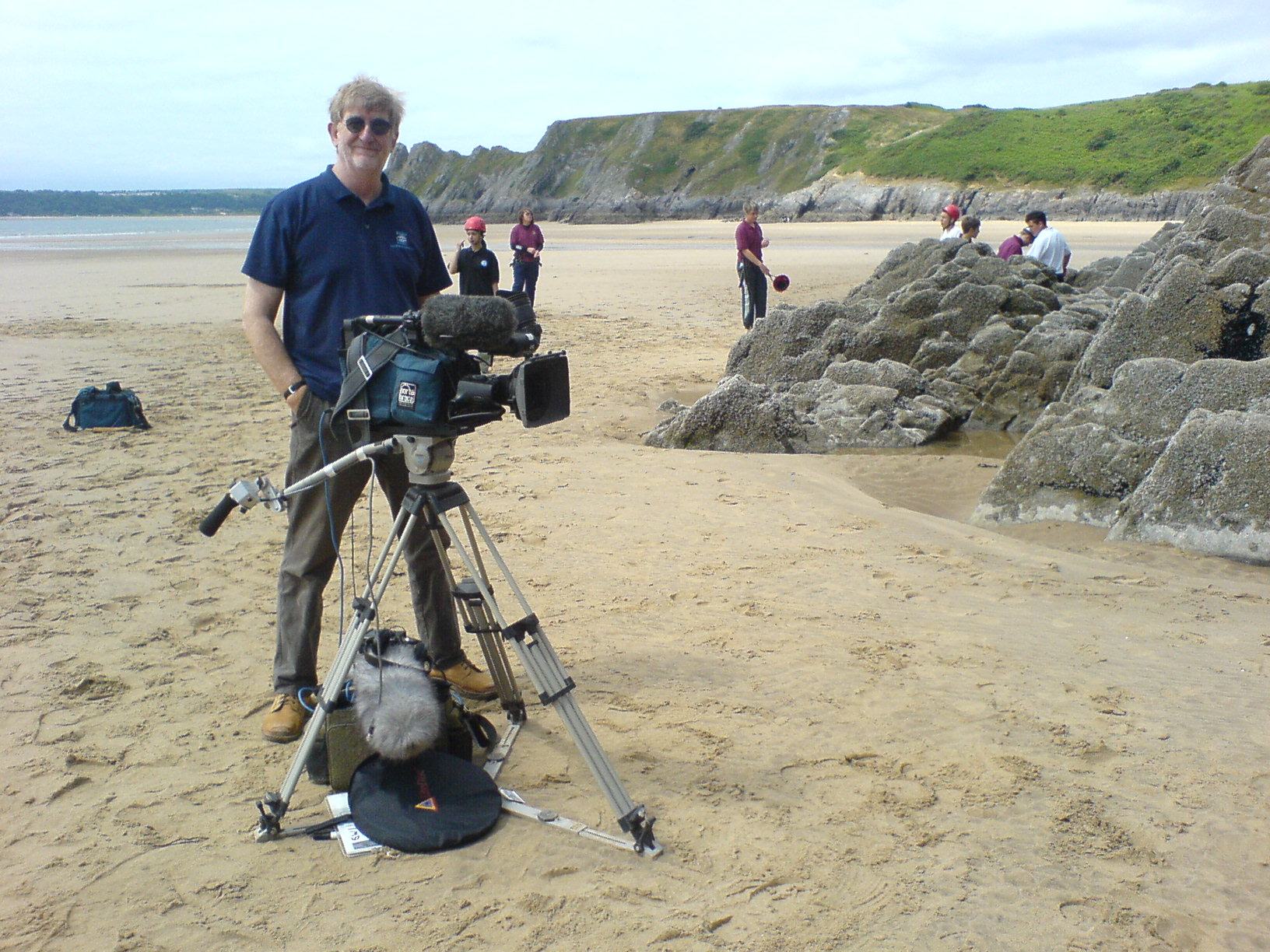
I left Gower for Pembrokeshire in 1970 and returned – this time to Three Cliffs Bay, in 2006 to make a promo for The City and County of Swansea’s Education Department about their three outdoor activities centres.
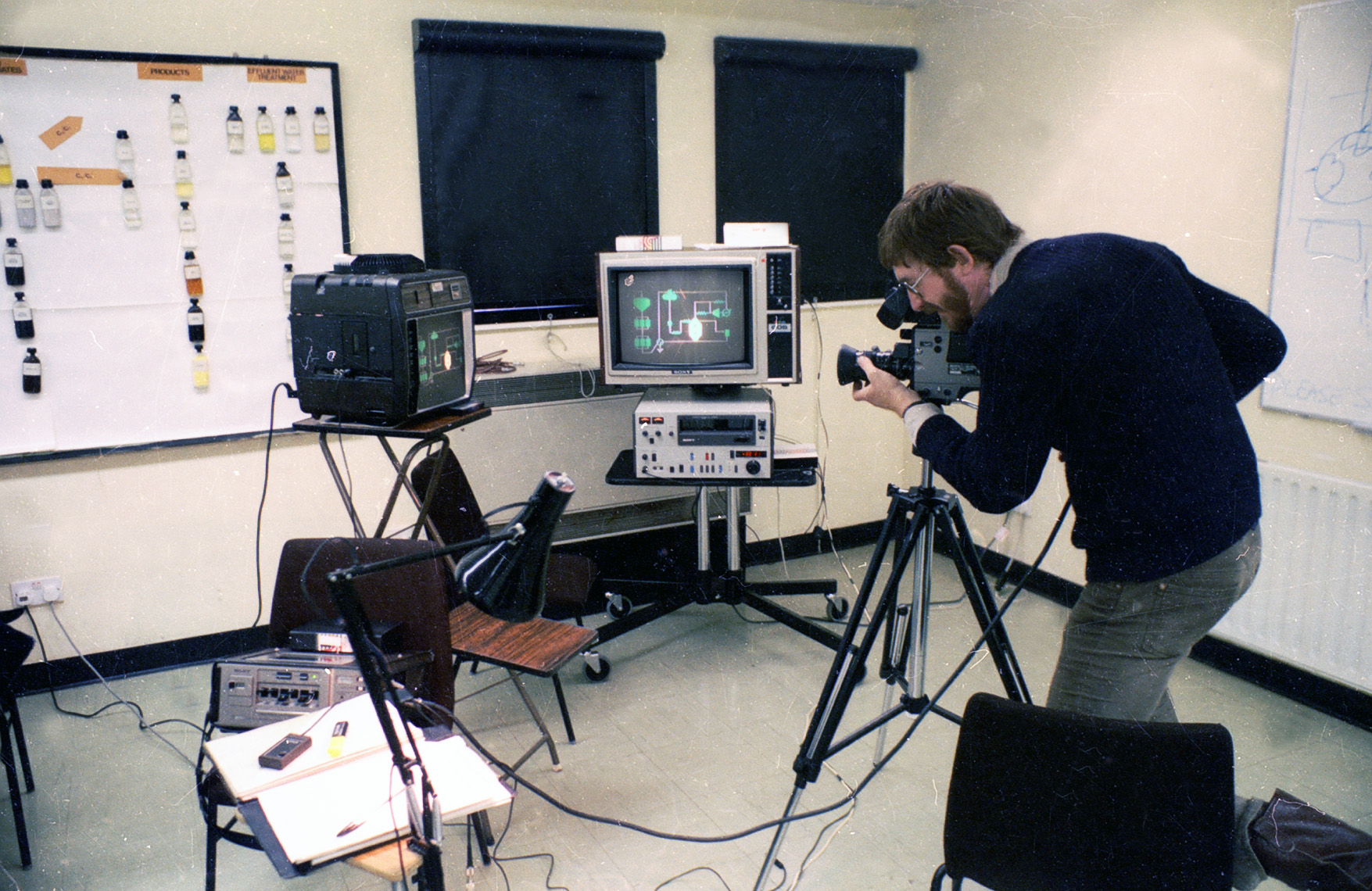
I joined AMOCO Oil UK as a trainee Process Operator at the then newly built (1975) Milford Haven Refinery. This was on January 7th 1981, one day after my 36th birthday. Before I had finished training and before the refinery’s upgraded units – the ‘Cat Cracker’ had been commissioned, I had discovered – in a Portacabin – a complete Sony U-Matic video recording kit, a camera, video tape recorder and a tripod. With a fairly rudimentary knowledge of photography from my Art College days, a basic grounding in 16mm and 8mm film and absolutely no experience of video, I managed to blag my way into making a series of video training programmes for AMOCO and set in train the beginnings of a new and very satisfying career.
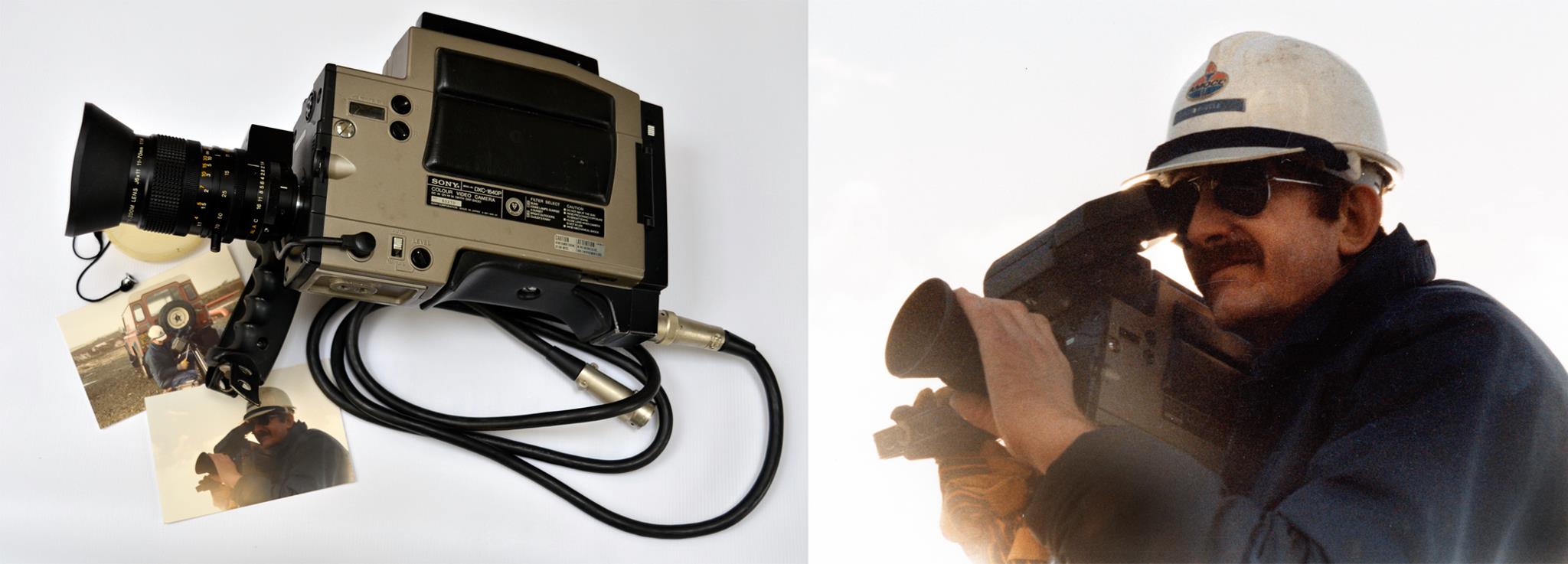
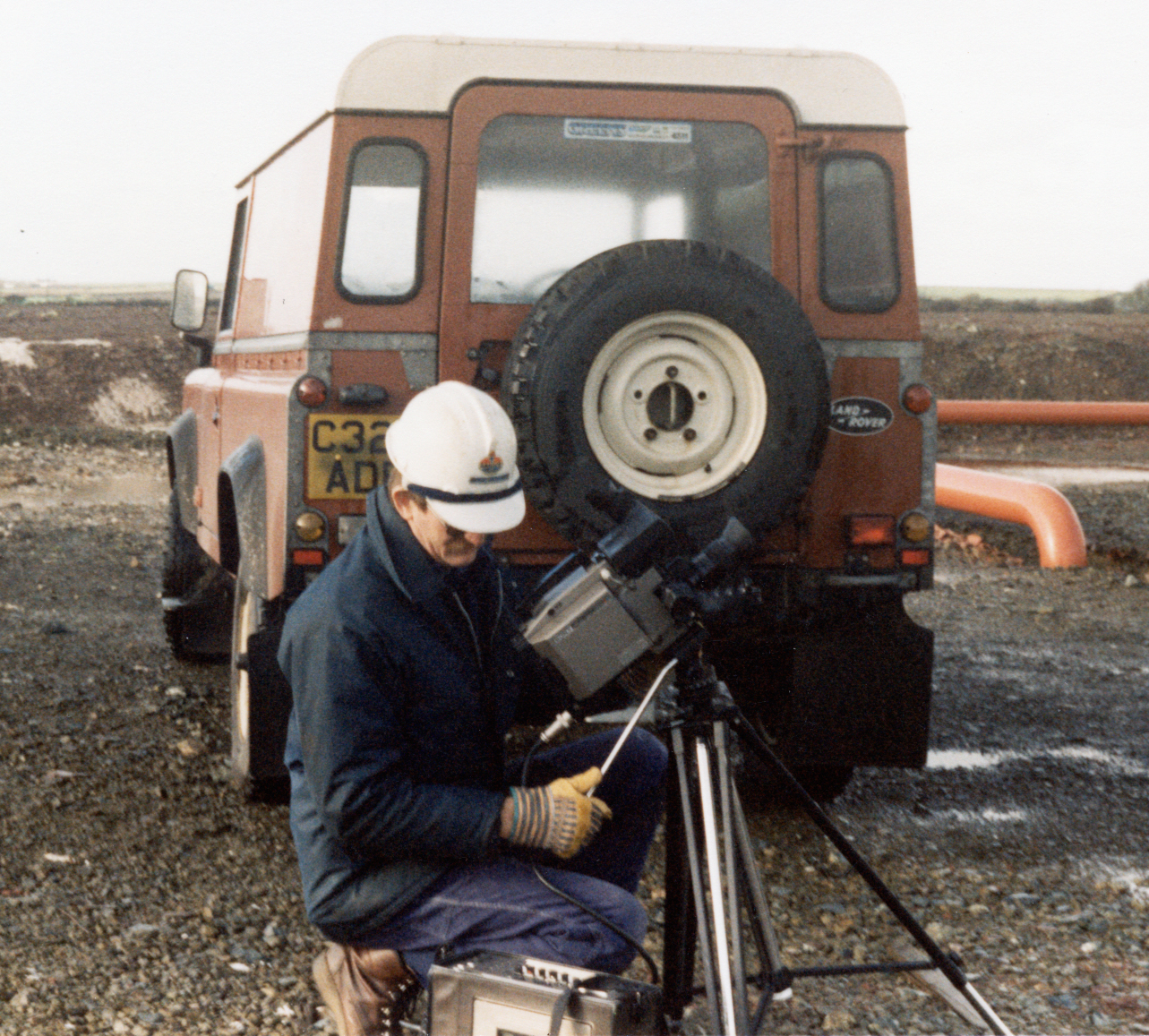 This is what passed as “portable” video equipment in the early 80’s. This Sony U-Matic camera was only half the recording kit. The actual recording part – using a 30 minute tape cassette – was the size and weight of a concrete block and ideally required the services of a second operator. Think ITV’s 80’s hit ‘Treasure Hunt’ without the helicopter.
This is what passed as “portable” video equipment in the early 80’s. This Sony U-Matic camera was only half the recording kit. The actual recording part – using a 30 minute tape cassette – was the size and weight of a concrete block and ideally required the services of a second operator. Think ITV’s 80’s hit ‘Treasure Hunt’ without the helicopter.

My first commission outside of work related programme making was a short feature for The Graham Sutherland Gallery at Picton Castle in west Wales. The artist, writer and conservationist Peter Scott was opening a retrospective exhibition of his considerable body of work.
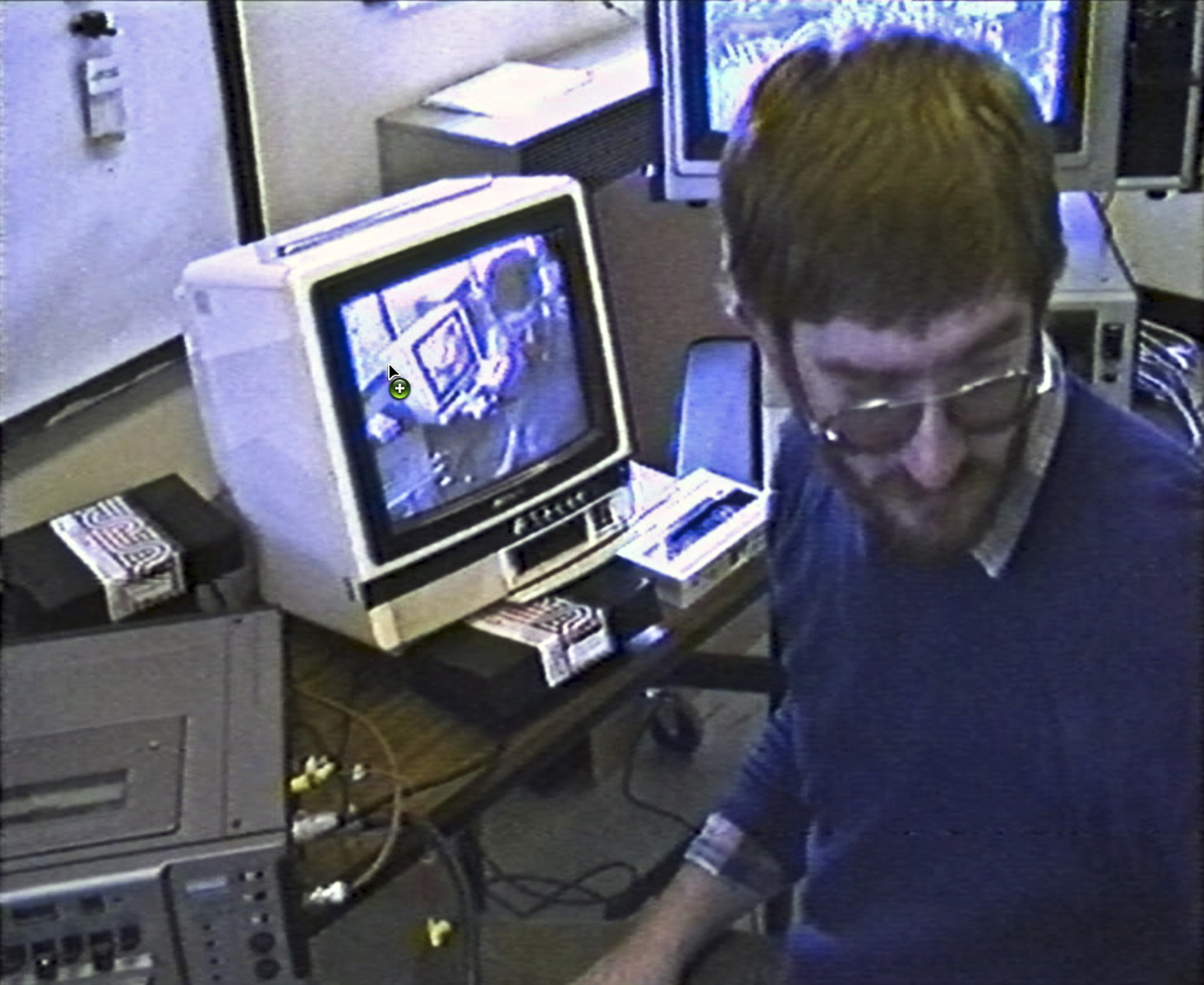
There are many advantages to using video tape rather than film for making training programmes. Instant replay and cheap re-usable tape come to mind. However editing video tape, especially as here at the dawn of the age of tape, is fraught with technical difficulties, which I appear to be attempting to overcome with a domestic portable TV and a couple of assorted U-Matic tape players. That I was ever able to complete an acceptable training programme with such a crude setup is amazing – that I was able to build a successful career on such a shaky start is nothing short of miraculous.
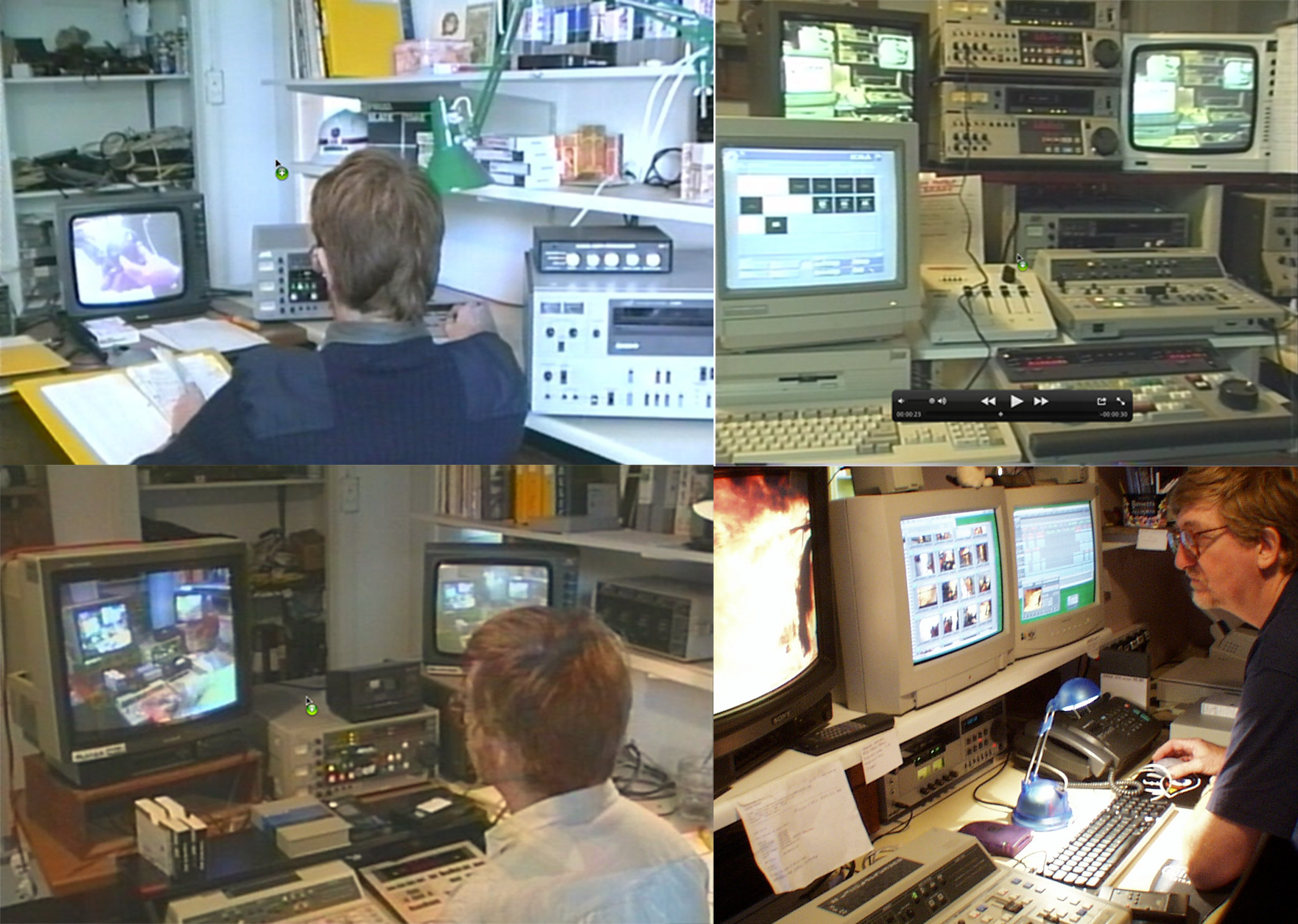
Slowly through the 80s and 90s linear – tape based – editing gradually gave way to digital editing using fairly crude computer based edit control systems at first, like the Amiga computer in the top right picture. The Amiga was a revolutionary tool for editors, allowing graphics and visual effects to be overlaid onto edited footage. It was about this time that I attended a video editing demonstration in Cardiff and, (in an often overused expression) my life changed for ever. It is no exaggeration to say that meeting Charles Manolescue – at that time working for Protovision – was responsible for that, and has informed, steered and encouraged the development of Enigma Video over many years.
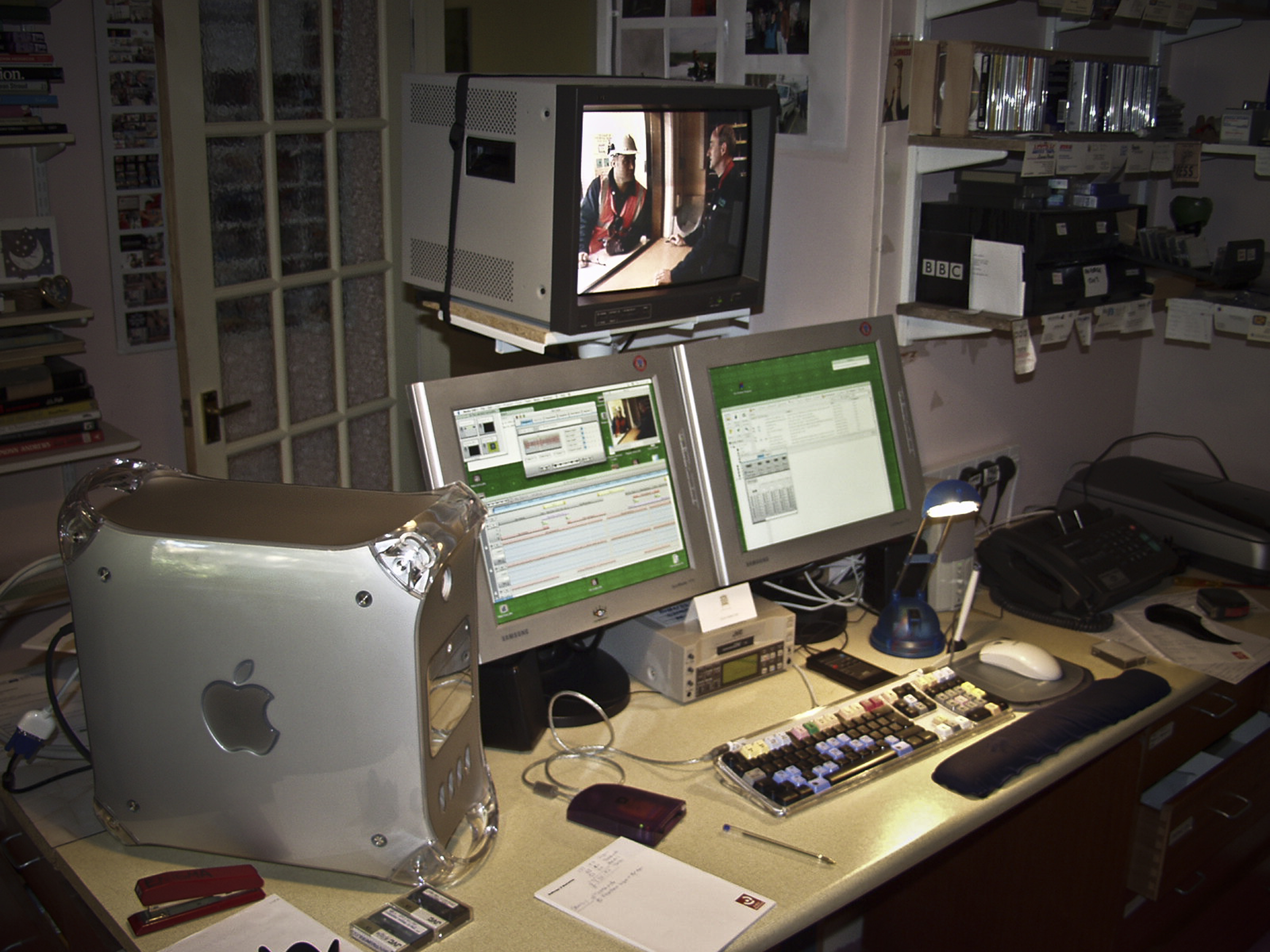
There is no argument that the advent of the Apple Mac computer changed video editing for ever. Apart from the advantage of running two screens from one source (an almost magical concept) the speed and convenience of working non-lineally and the total control over the video and audio content released us editors from hours of mind numbing toil. Flat screens were an added luxury too.
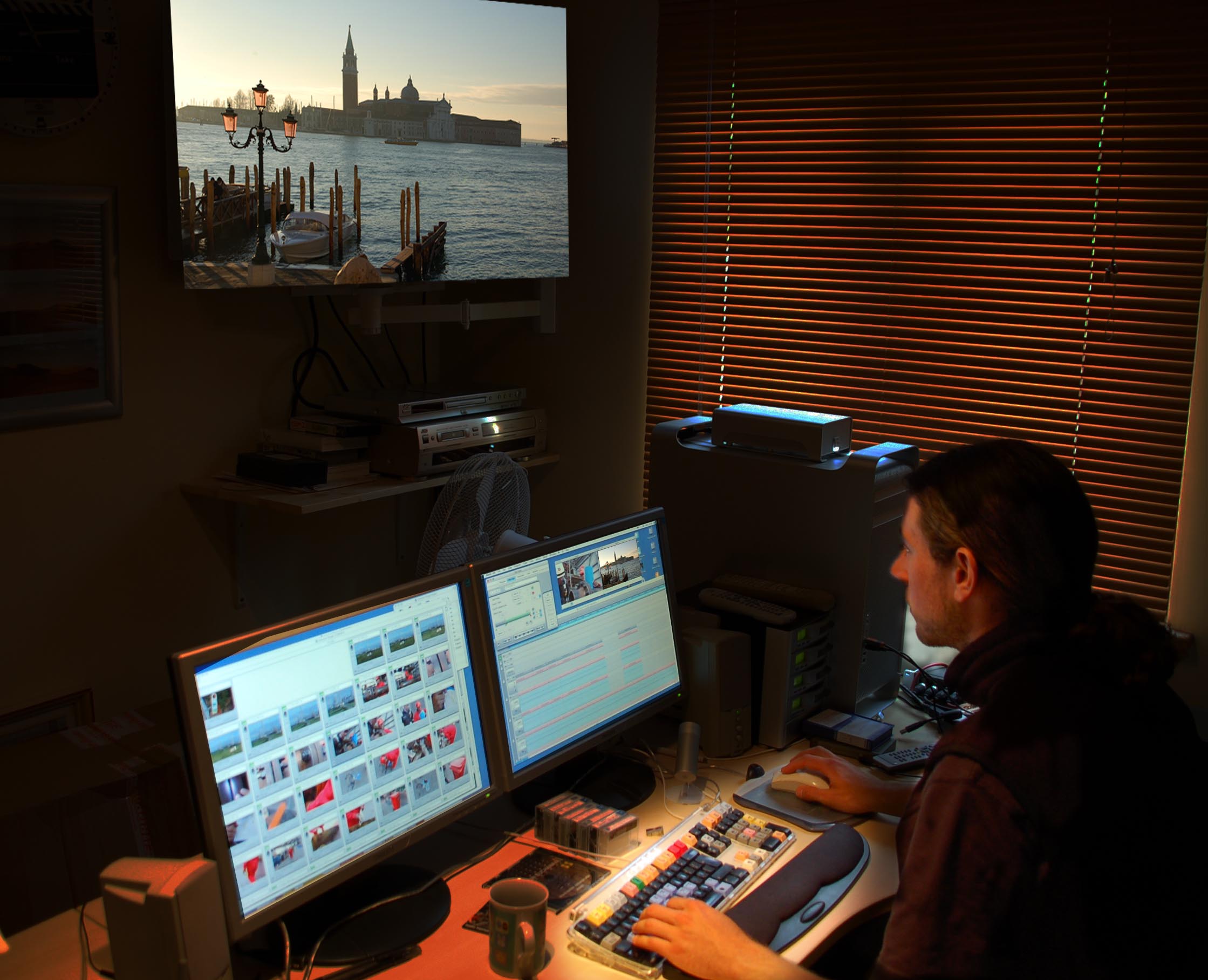
About 2005 we were offered a grant from the Welsh Assembly Government to upgrade our facilities for Hi Def widescreen production. This seemingly simple task was anything but, involving as it did the whole pre and post production chain in order to achieve a totally HD environment. We decided to go with the Panasonic HD P2 solid state recording system and bought two P2 camcorders, a P2 player, upgraded demountable storage, a new Media100 edit suite and a new AppleMac Pro computer to run the whole thing.

In December 2015, with a fairly heavy schedule to complete after shooting the National Trust Christmas trailer at Tyntesfield near Bristol, we began a major overhaul of the Enigma edit suite, replacing the older MacPro, seen on on the left here, with a new 21″ iMac, on the right. Both the original 18″ monitors are still in use as extra desktop space. Much of the hardware and most of the software had to be either replaced or upgraded to work with the new Mac operating system. Installation was completed without any problems by Enigma’s long term equipment supplier, the brilliant Charles Manolescue of Digital Garage Ltd, Banbury.

One of the first programmes we made with the new Super VHS camcorder that replaced the U-Matic camera/recorder was a new induction programme for the refinery’s training department. We used the Fire and Rescue Department’s 30 metre Simon hydraulic platform to get some high shots of the refinery.
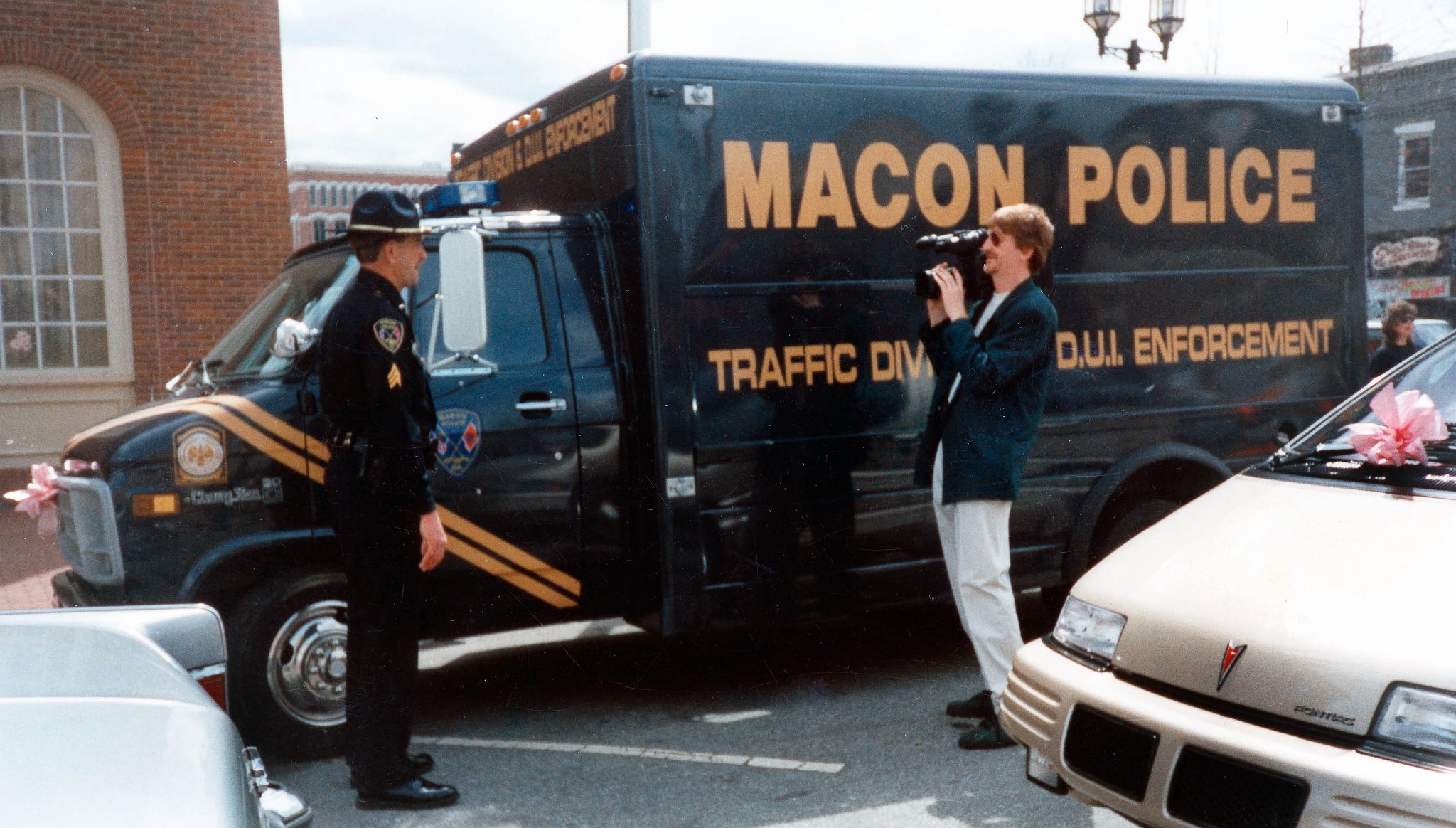
In 1993 we travelled to Georgia in the USA to make a video programme about the annual Macon Cherry Blossom Festival for Lord Parry of Neyland. For this trip, our obliging equipment supplier Charles Manolescue, provided a lightweight ‘hand luggage’ S-VHS camcorder to replace the two piece camcorder (like the one on the left in the picture) we were using at the time.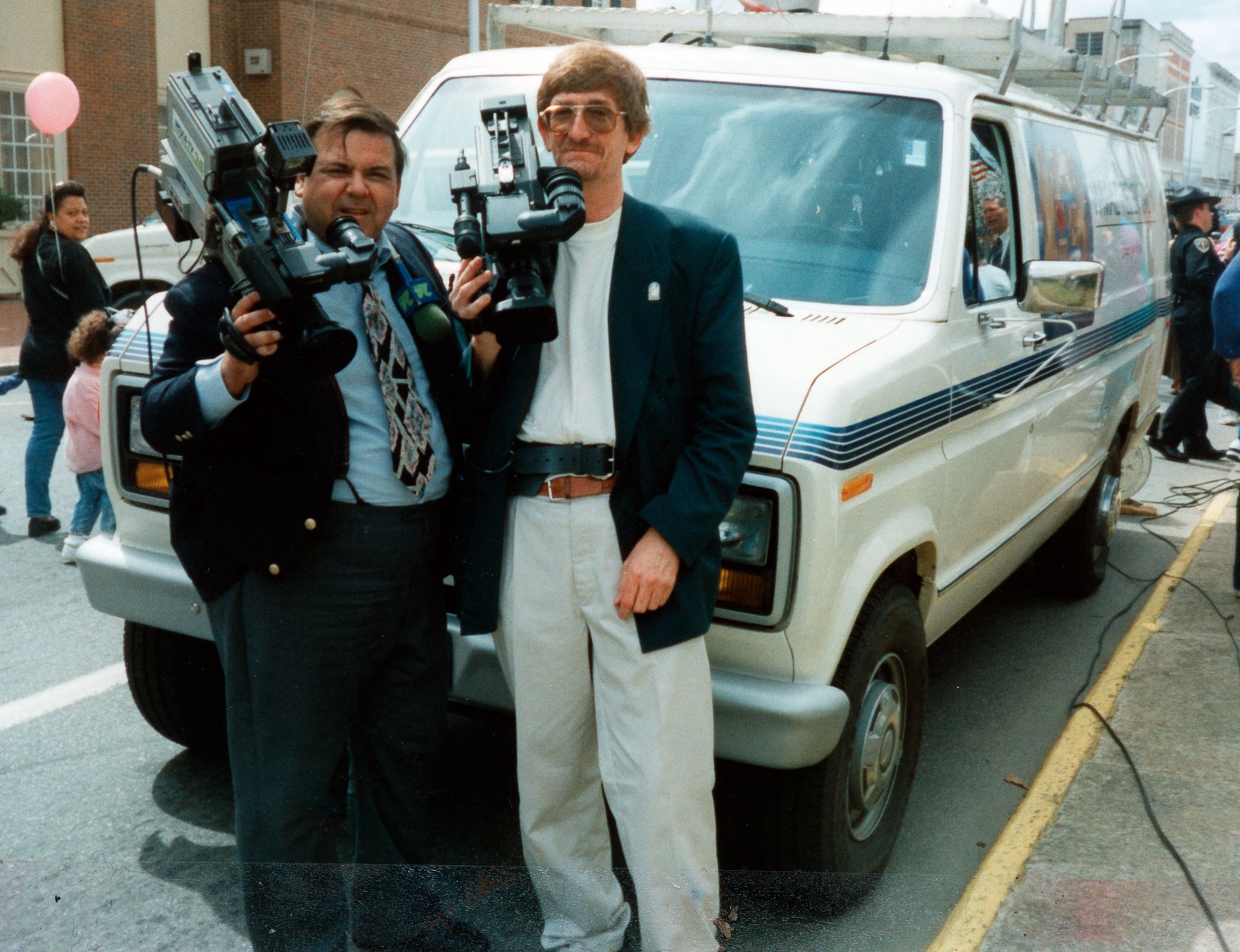
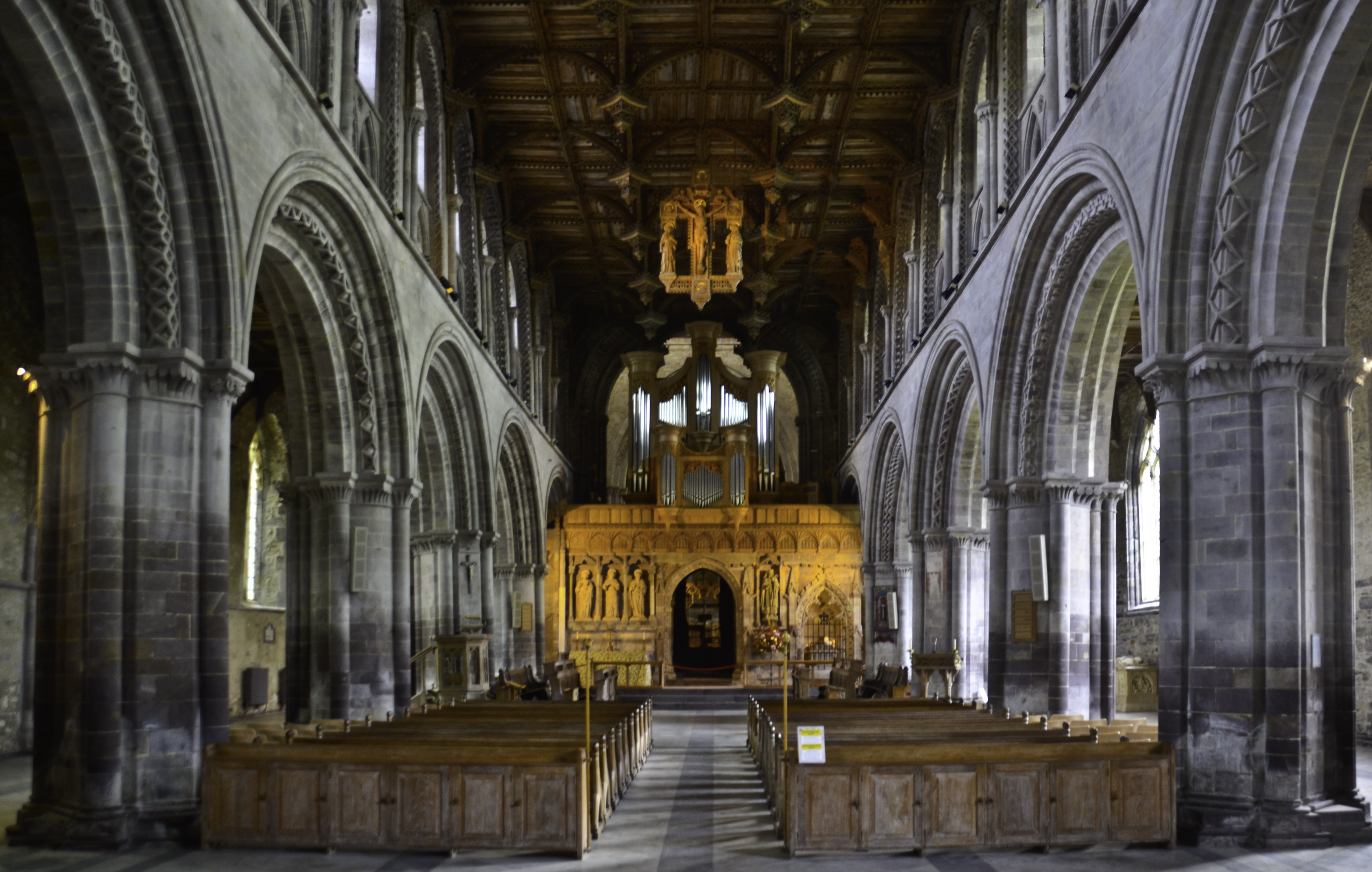
The tiny city of St Davids finally became The City of St Davids in a ceremony played out in the ancient cathedral on the 1st June 1995. Long regarded as a city in its own right, the investiture of city status was acknowledged and confirmed by Royal Charter by HM the Queen. I was commissioned by the city council to film the day’s events and produce a short feature to commemorate the event. This was the point where Enigma Video was born. Up until now all my video work had been undertaken as an employee of Amoco and then Elf Oil, using those company’s equipment. From here I would have to invest in my own production equipment and create my own identity as a programme maker.

In the summer of 1999 the Elf Oil refinery at Milford Haven underwent a massive upgrading to prepare for the introduction of strict European legislation on cutting sulphur in diesel fuel. Beside my other duties on the refinery, I was asked by the company to film the construction process and in particular the ‘Big Lifts’ – the moving to site and the erection of 200 tonnes of prefabricated process plant. One of the best vantage points, I discovered, was from a man-basket slung from one of the giant telescopic cranes.
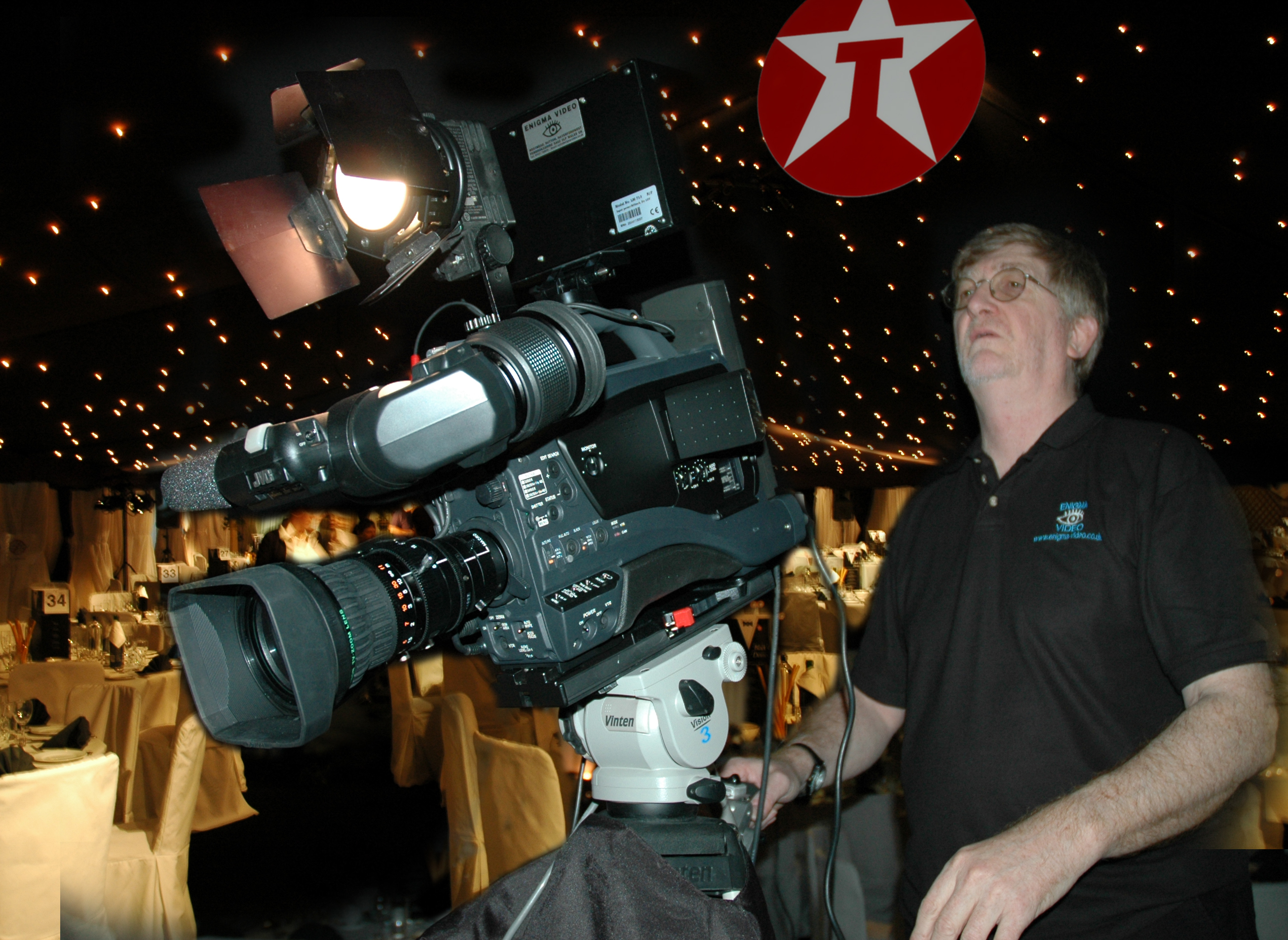
The April 2005 issue of the IOV’s Focus Magazine ran an article I had written about the then new JVC DV-5100 digital video camera. The camera was on loan to us from our good friends at Digital Garage Banbury and is here being used as a live feed to a series of large plasma screens during a charity event for Tsunami victims hosted by the local Texaco refinery.
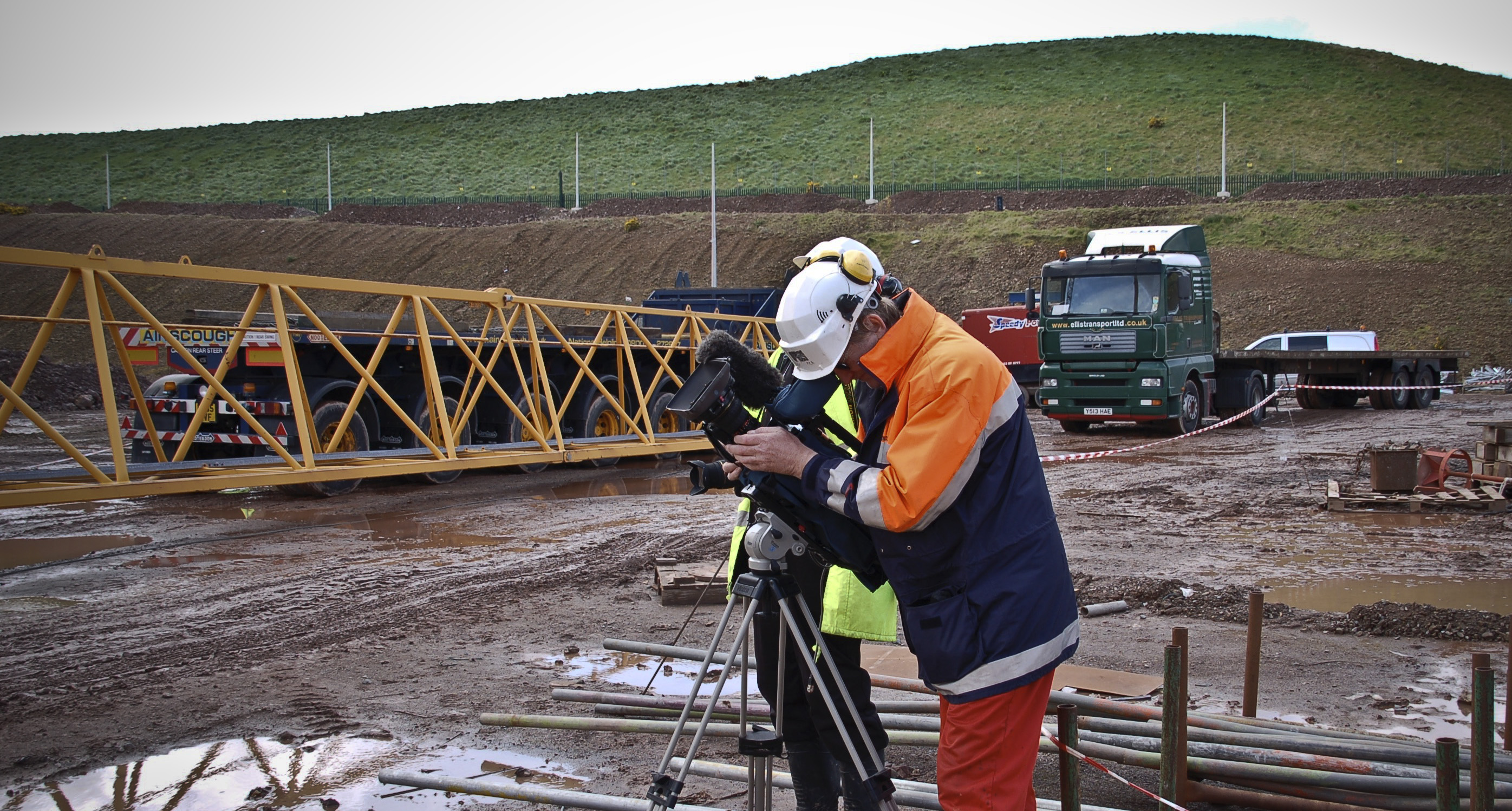
In early 2005, Enigma Video was contracted to provide a video record of the construction of the giant LNG plant at Milford Haven in west Wales. Originally a one year contract involving a twice monthly visit to site, it rapidly developed into a five year contract involving weekly and often daily visits to site to record the pivotal sequences of this fascinating and complex construction project. In all Enigma Video produced over 60 DVDs of the building phase and four short versions of the construction process for our clients Whessoe Volker-Stevin.
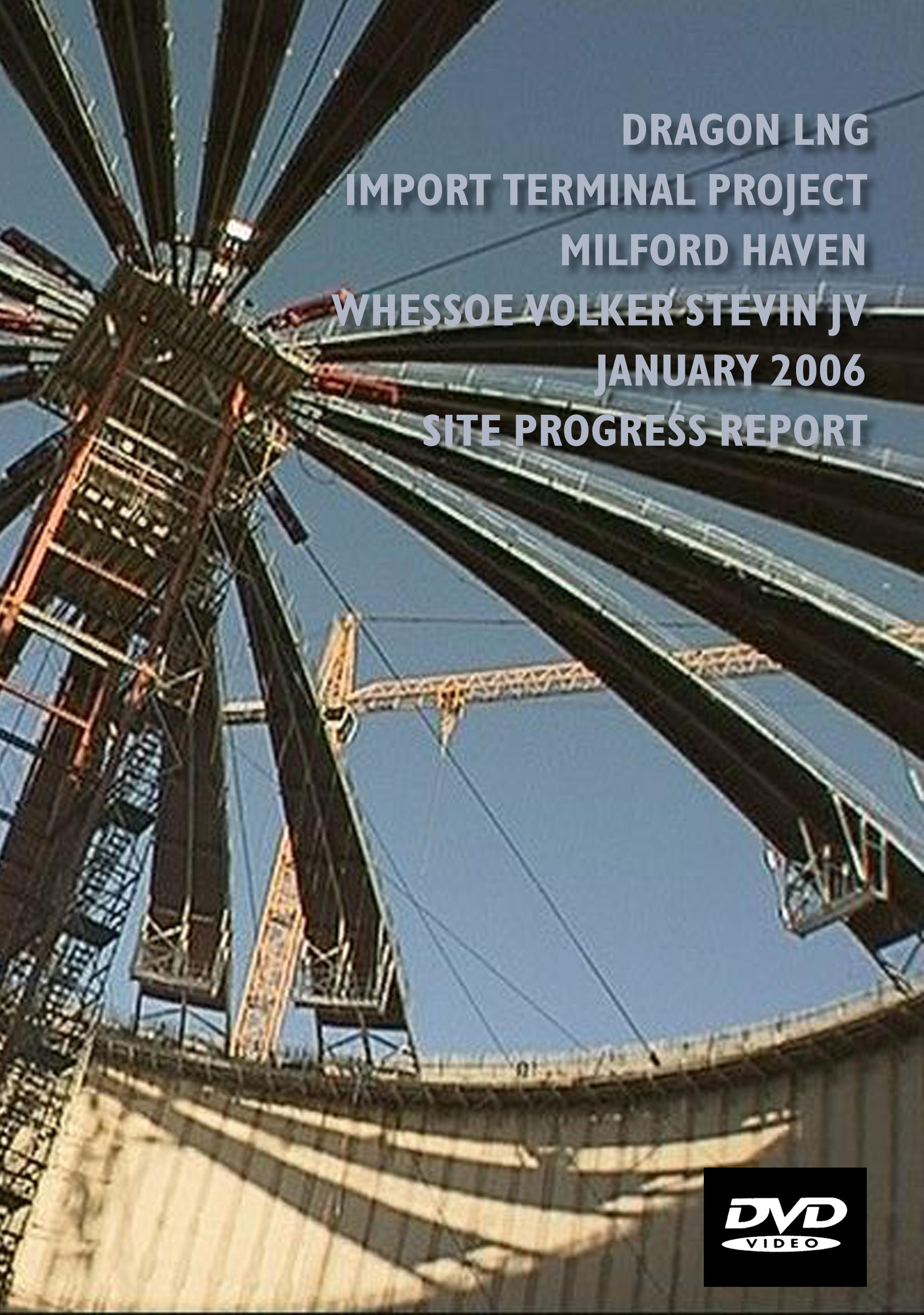
One of the over 60 monthly DVD progress videos we produced for Whessoe Volker-Stevin
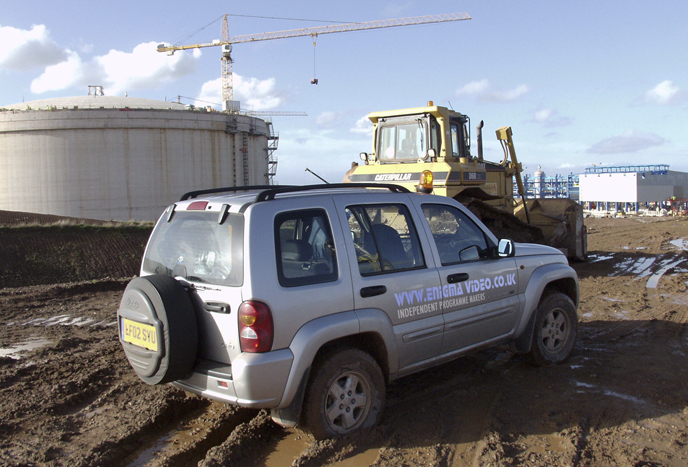
From 2005 until 2010 we recorded the construction project on a weekly and sometimes daily basis, all year around, in all weathers, sometimes at night. We filmed on and over the water, worked at height and in confined spaces, worked with specialist contractors from all over the world and watched as one of the most complex engineering projects was brought to completion.
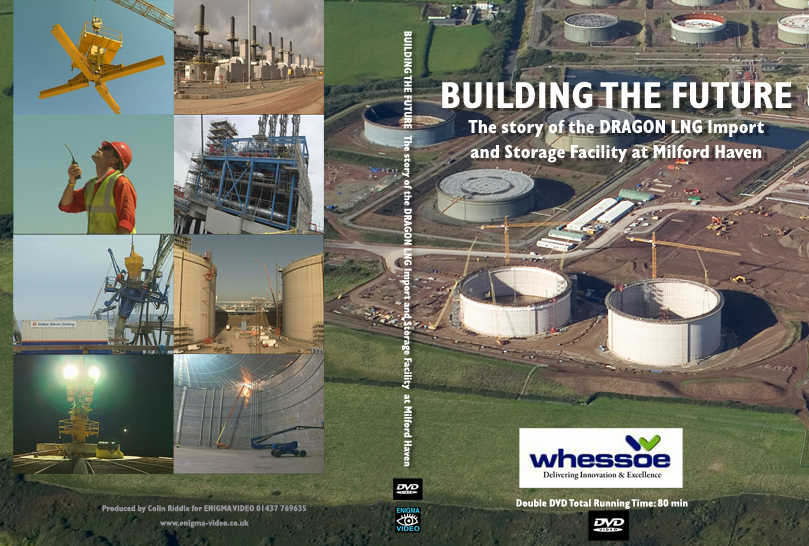
In 2010 with the LNG project completed we produced several short documentaries of the build – from testing the ground with core samples to the final commissioning of the plant.
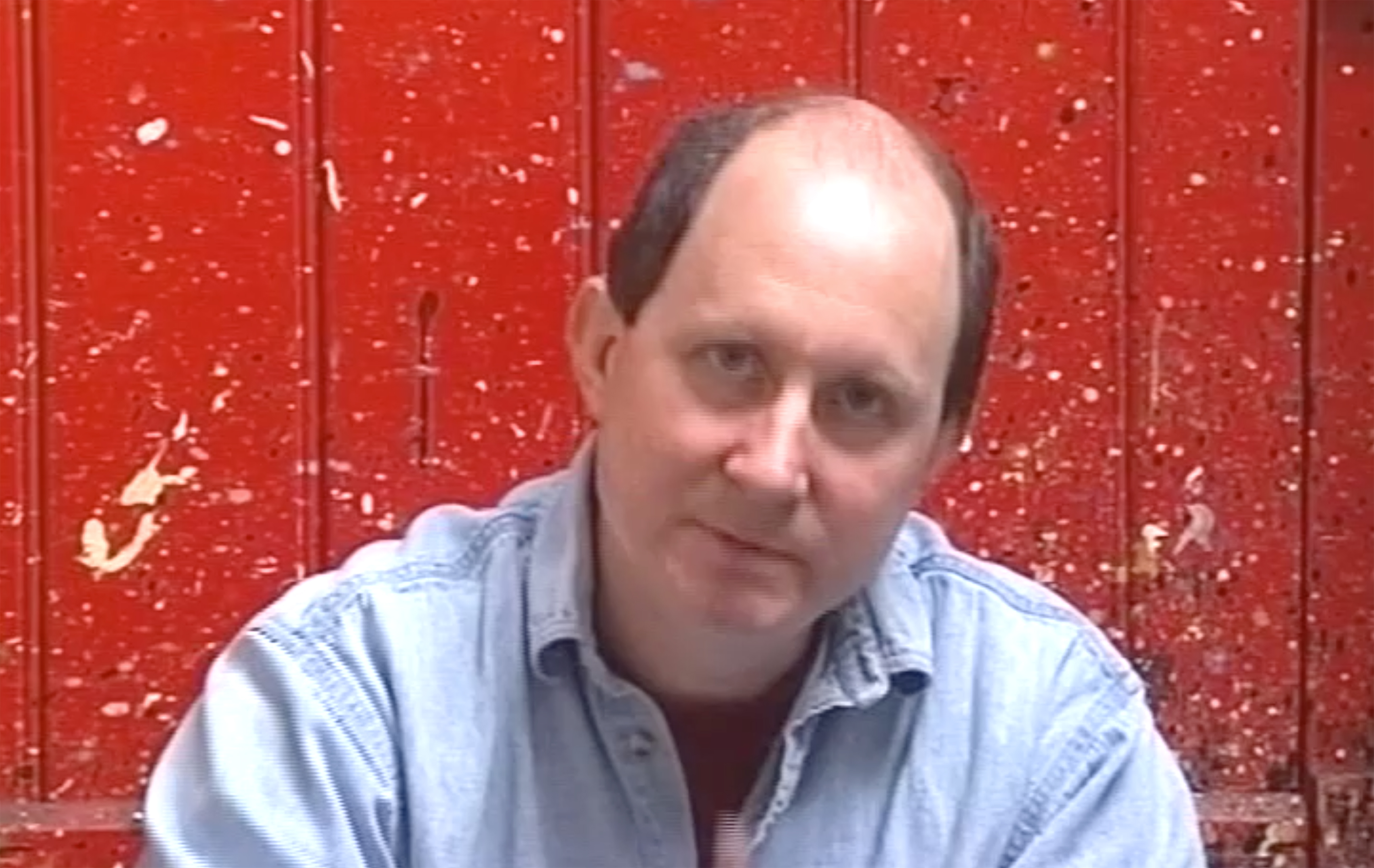
In the summer of 2007 I was commissioned to produce a short video programme for artist David Tress to accompany a travelling exhibition of his drawings and paintings. We filmed in his tiny studio above a lock-up garage near Haverfordwest’s ancient castle and then, later, out in the landscape of north Pembrokeshire that continues to inspire him.
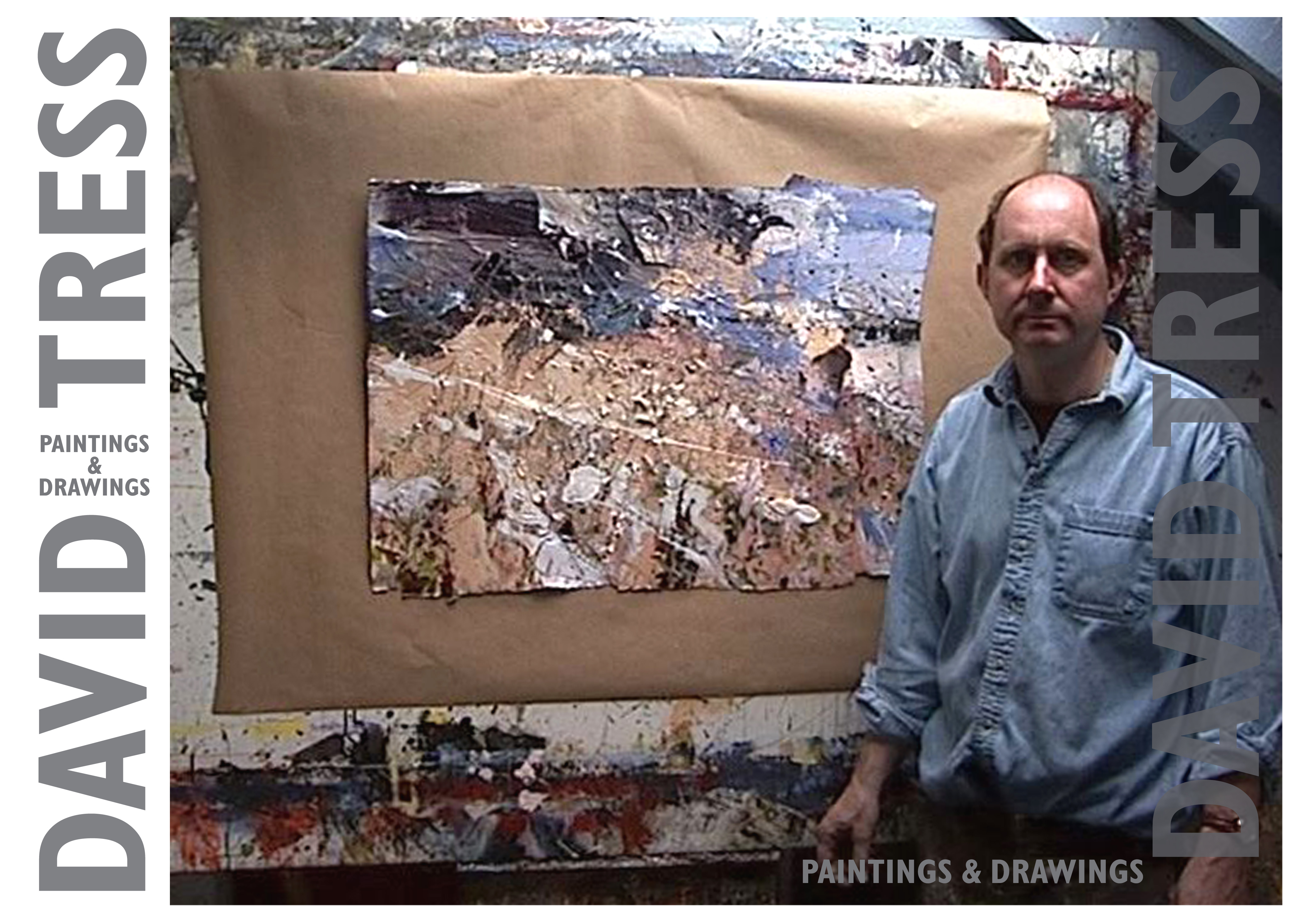
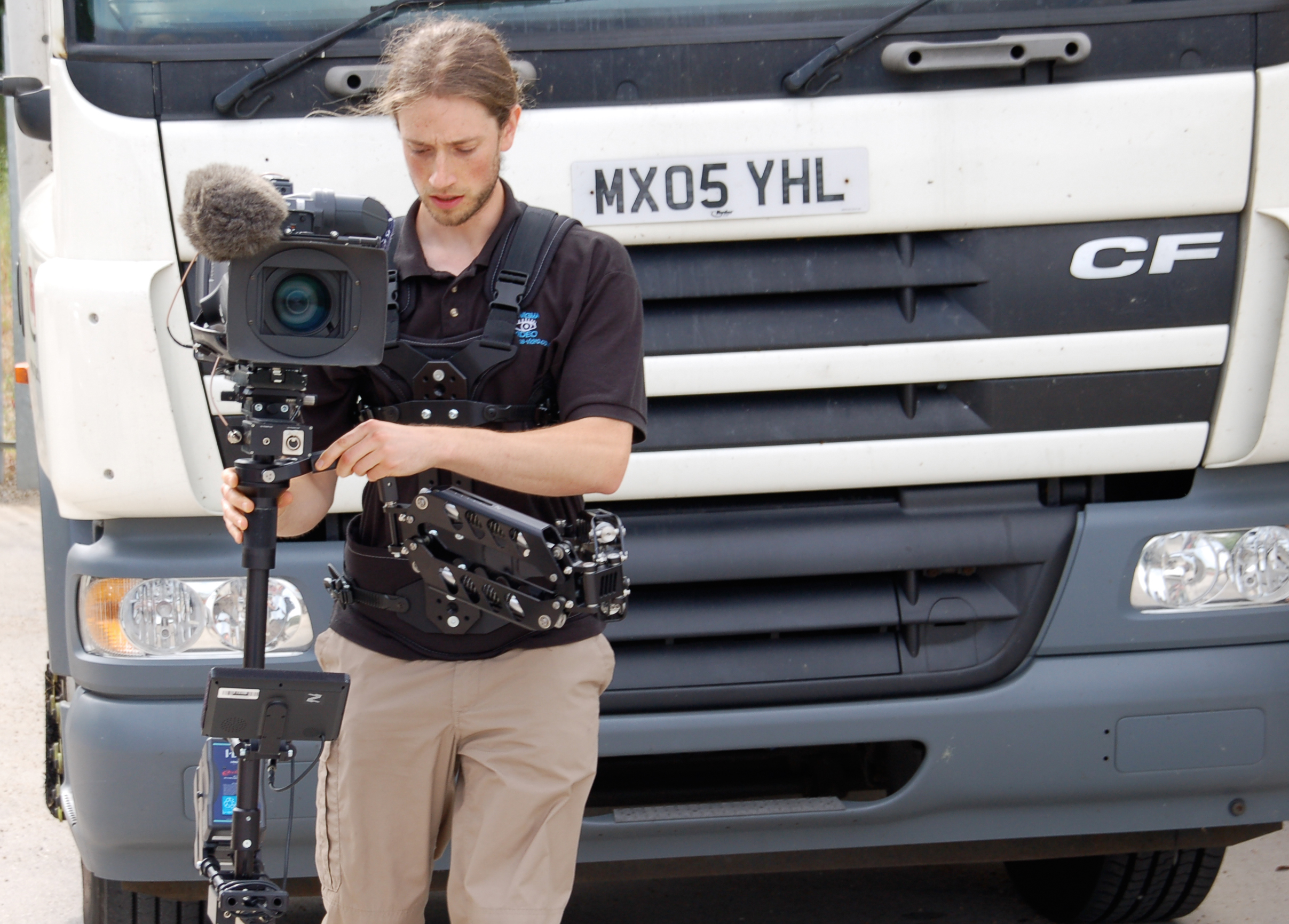
In September 2010 Focus Magazine published a review by Colin Riddle and Joshua Richards (seen left and below) of the IDX EasySteady camera stabiliser system that Enigma had been loaned for a fortnight that summer. This was part of a series of magazine articles and reviews that we authored over several years.
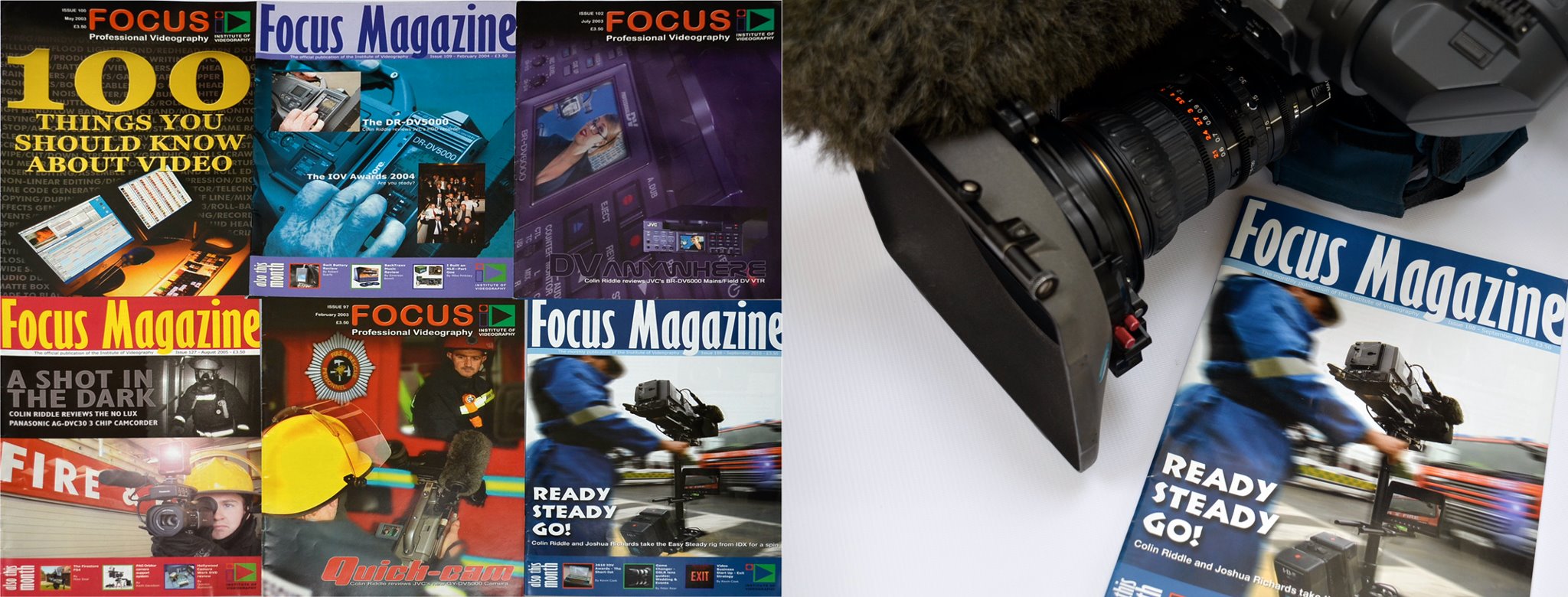
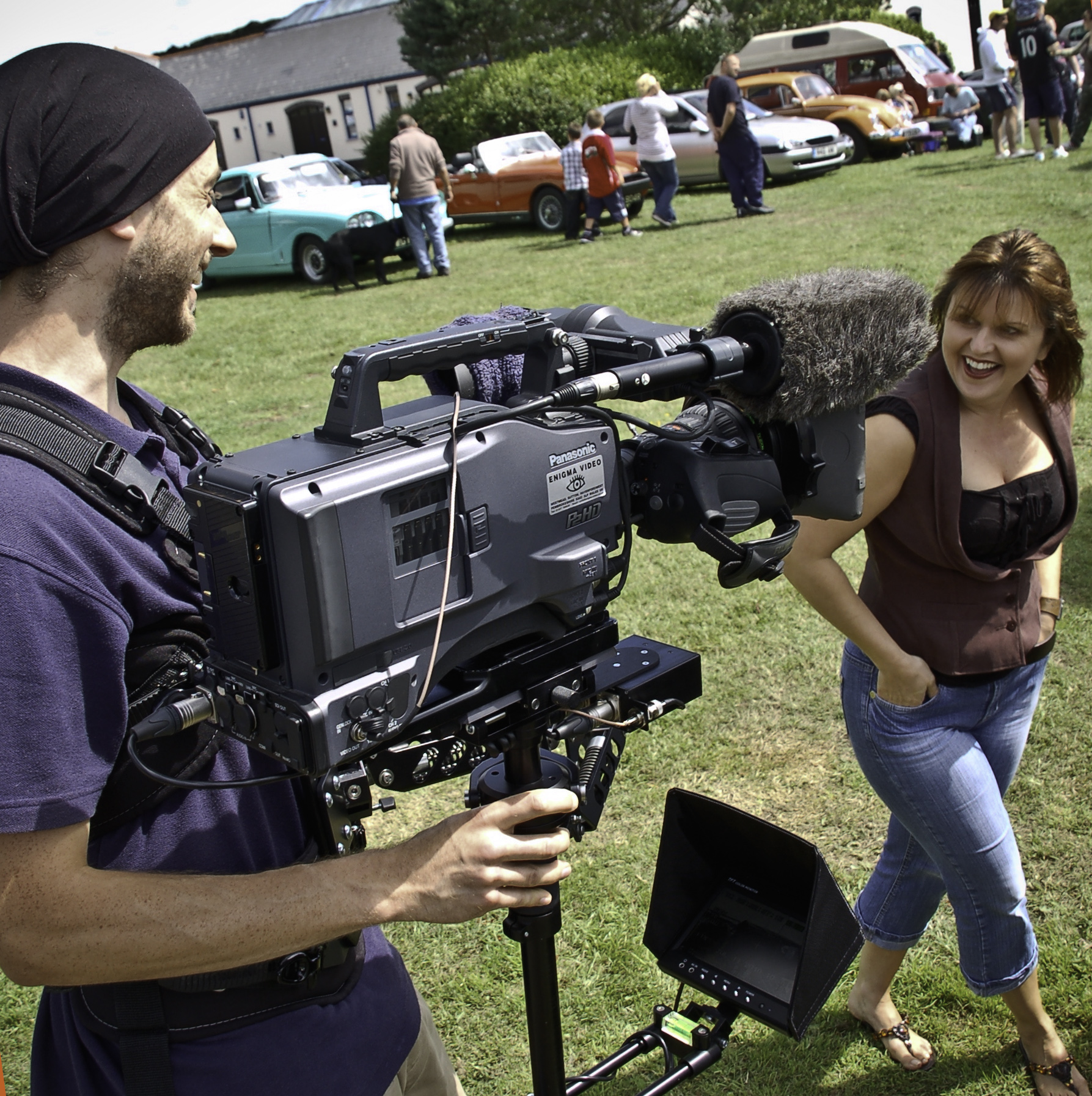
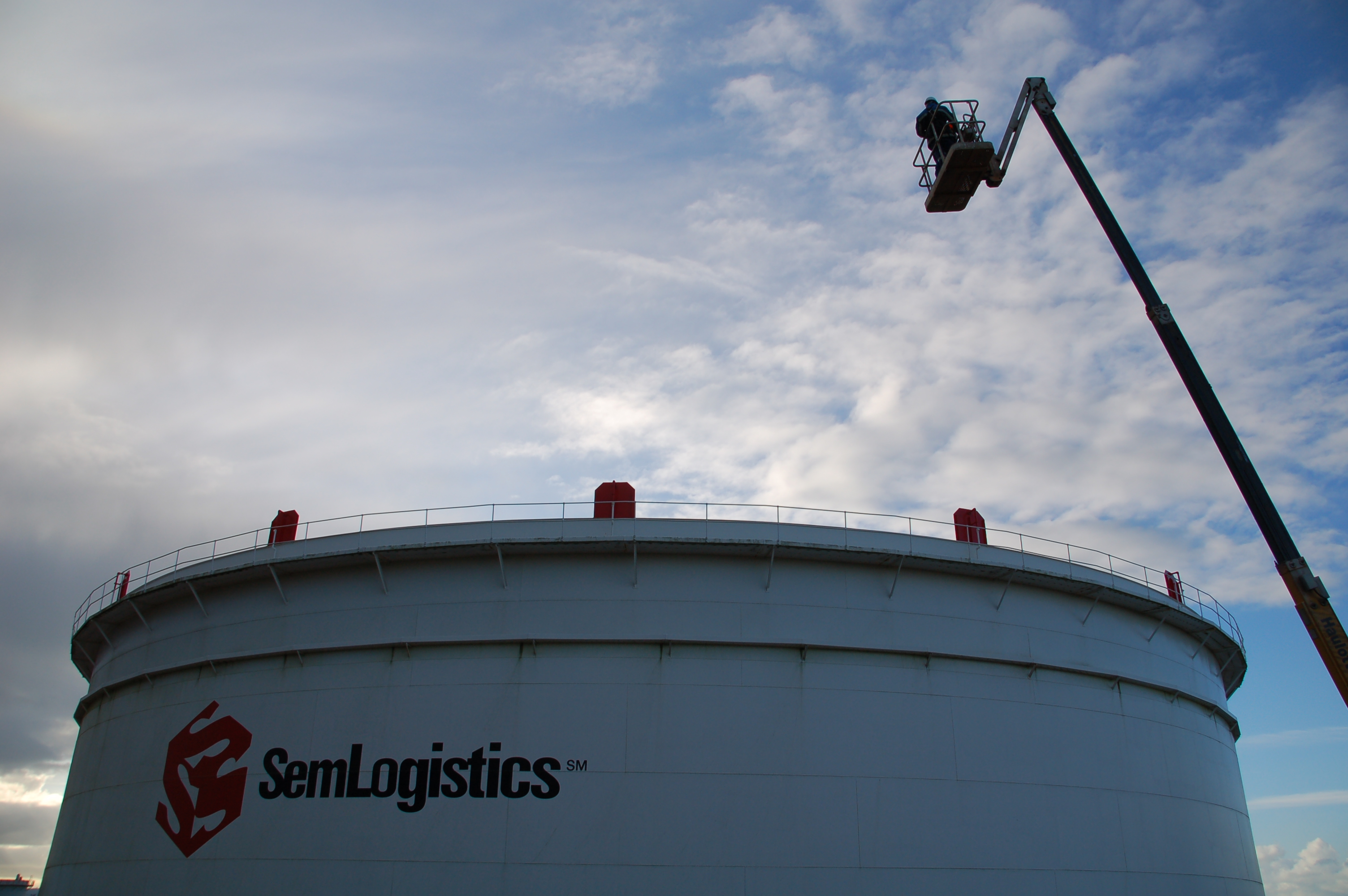
In October 2010 we made the first of a series of safety training programmes for the Semlogistics storage facility at Milford Haven. One of the perks of the job was being able to commandeer some impressive pieces of site equipment to use as camera platforms. Here a 100′ hydraulic lift is being used for a crane shot over one of the massive storage tanks.

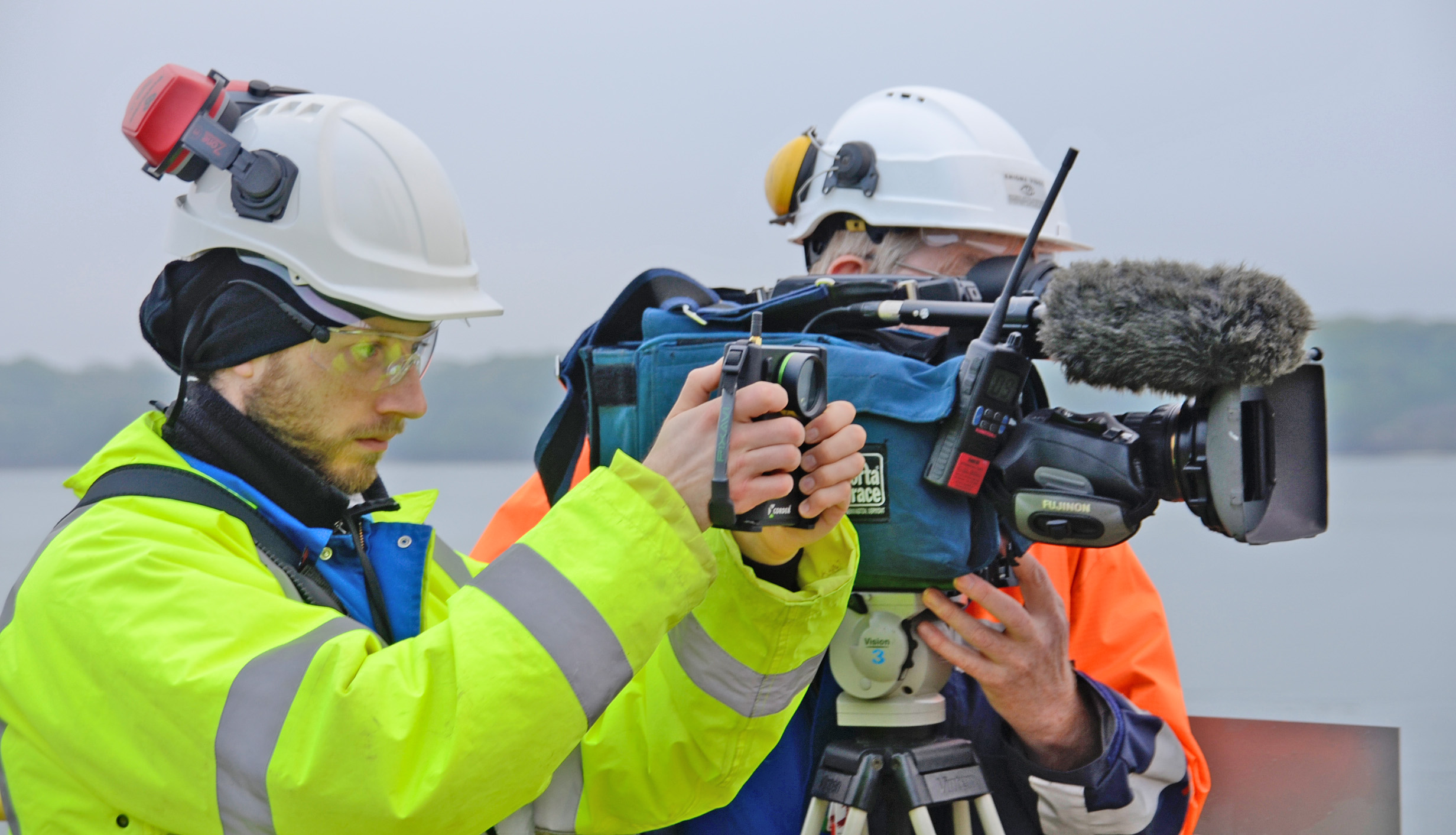
Working in potentially explosive atmospheres like here on an LNG jetty is, with some justification, a very restricted practice. For a training film for LNG jetty operators we were prohibited from using our usual video cameras once the LNG tanker had tied up. For the connecting and transferring sequences – vital for the training programme to be effective – we were required to use an intrinsically safe video camera, seen here in the foreground being operated by Enigma camera assistant Joshua Richards.
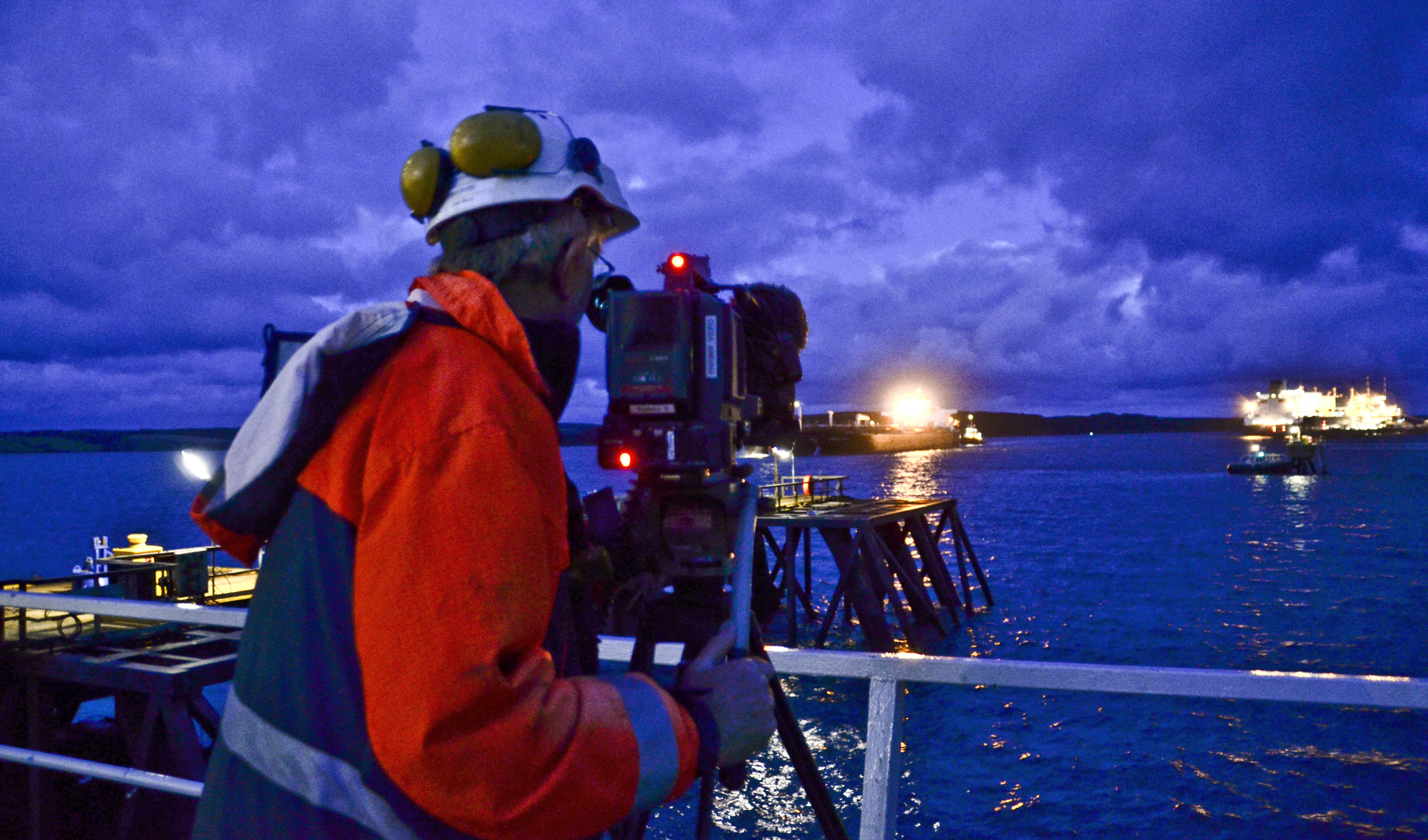
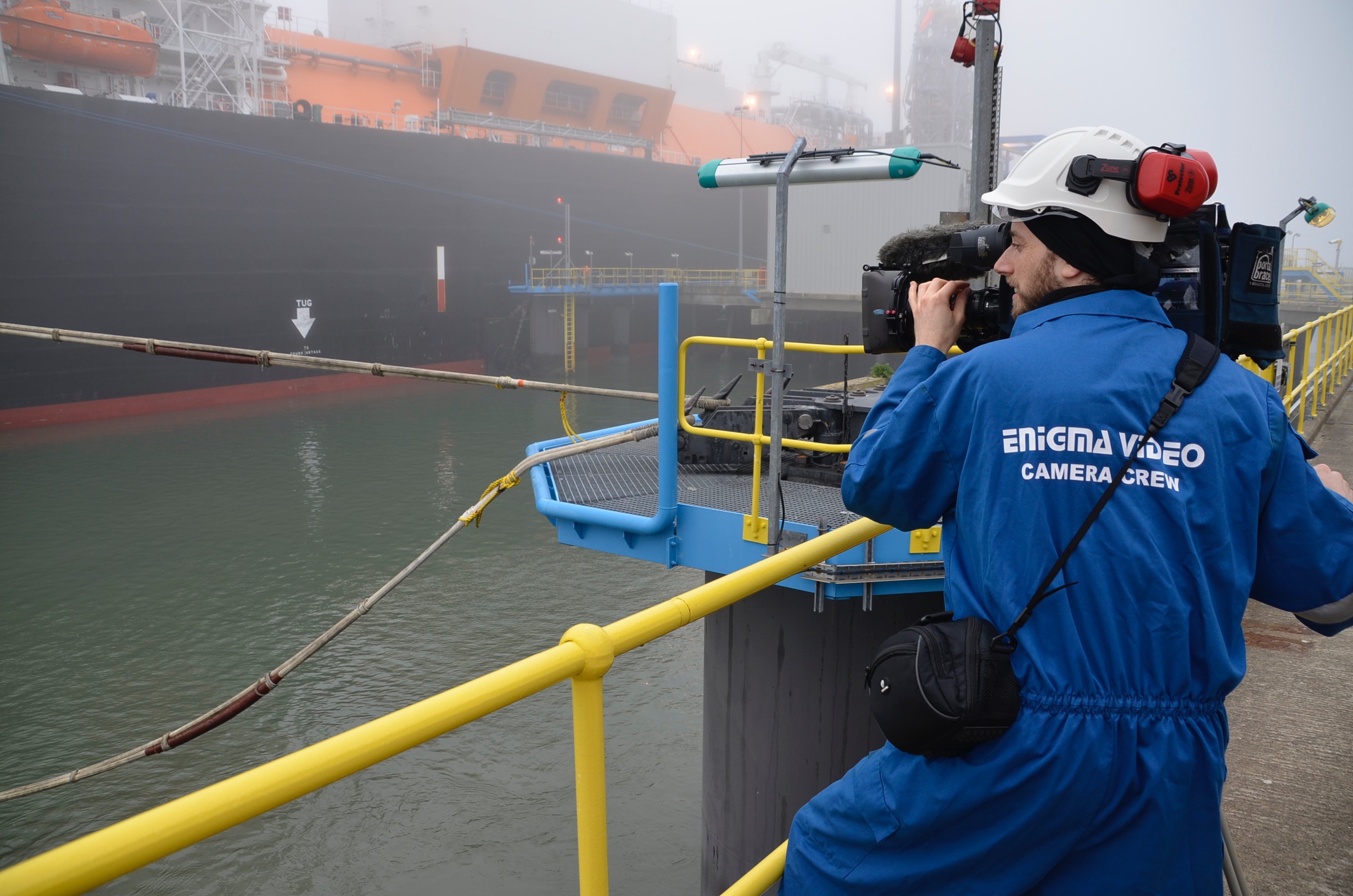
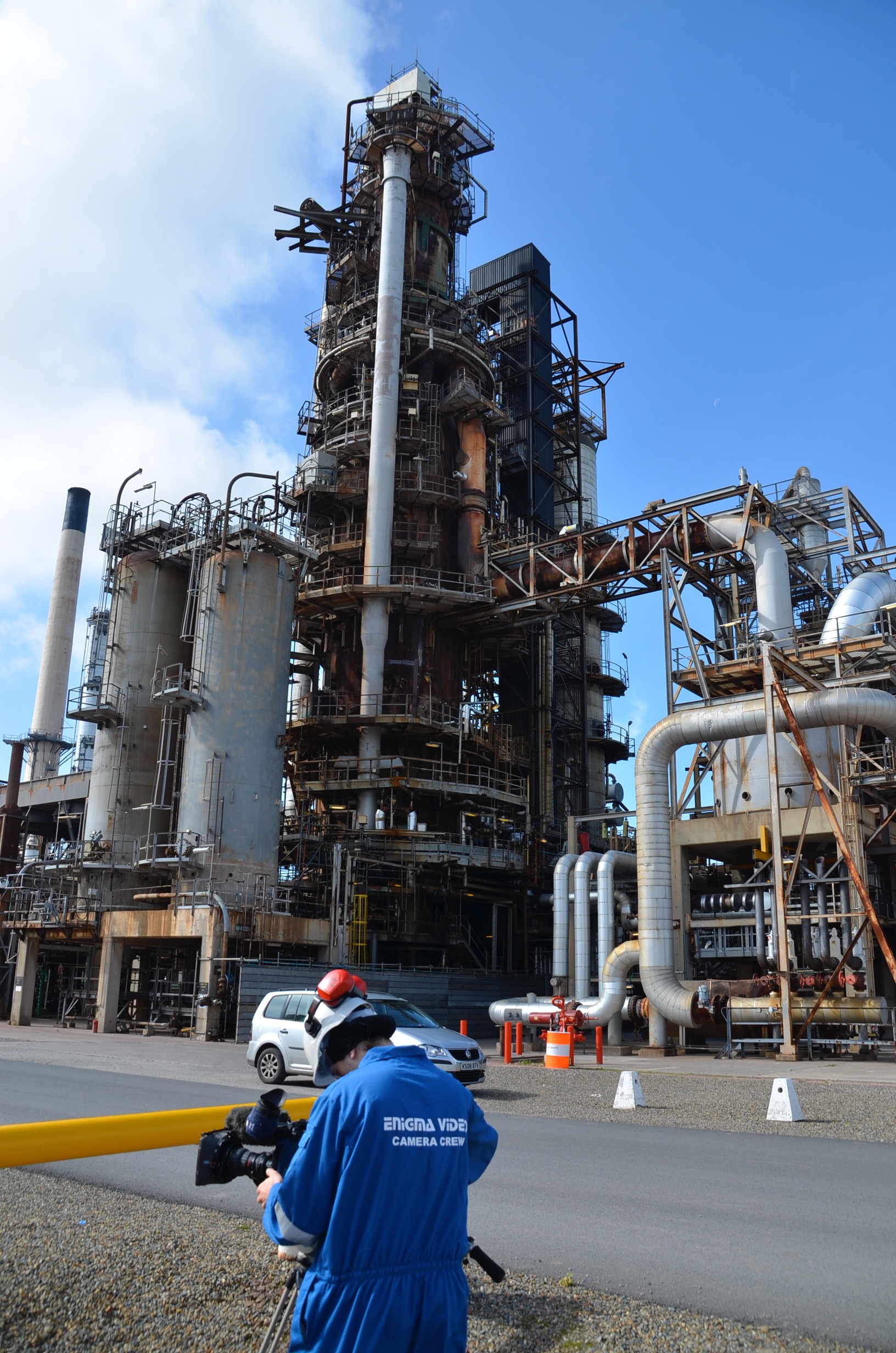
We had made programmes for the Milford Haven Refinery since 1981 when it was owned by the American multinational AMOCO Oil. We subsequently made training and promotional films for all its successive owners – Elf Oil UK, Total and finally Murco Petroleum. When Murco put the facility on the market in 2015 we were asked to make a short promo for the House of Commons Library which would be distributed to potential buyers. Sadly, though the sales negotiations were fairly advanced, the main buyer pulled out at the last moment and the site is now to be demolished, though the tank farm, jetty and road/rail facilities are continuing to trade successfully.
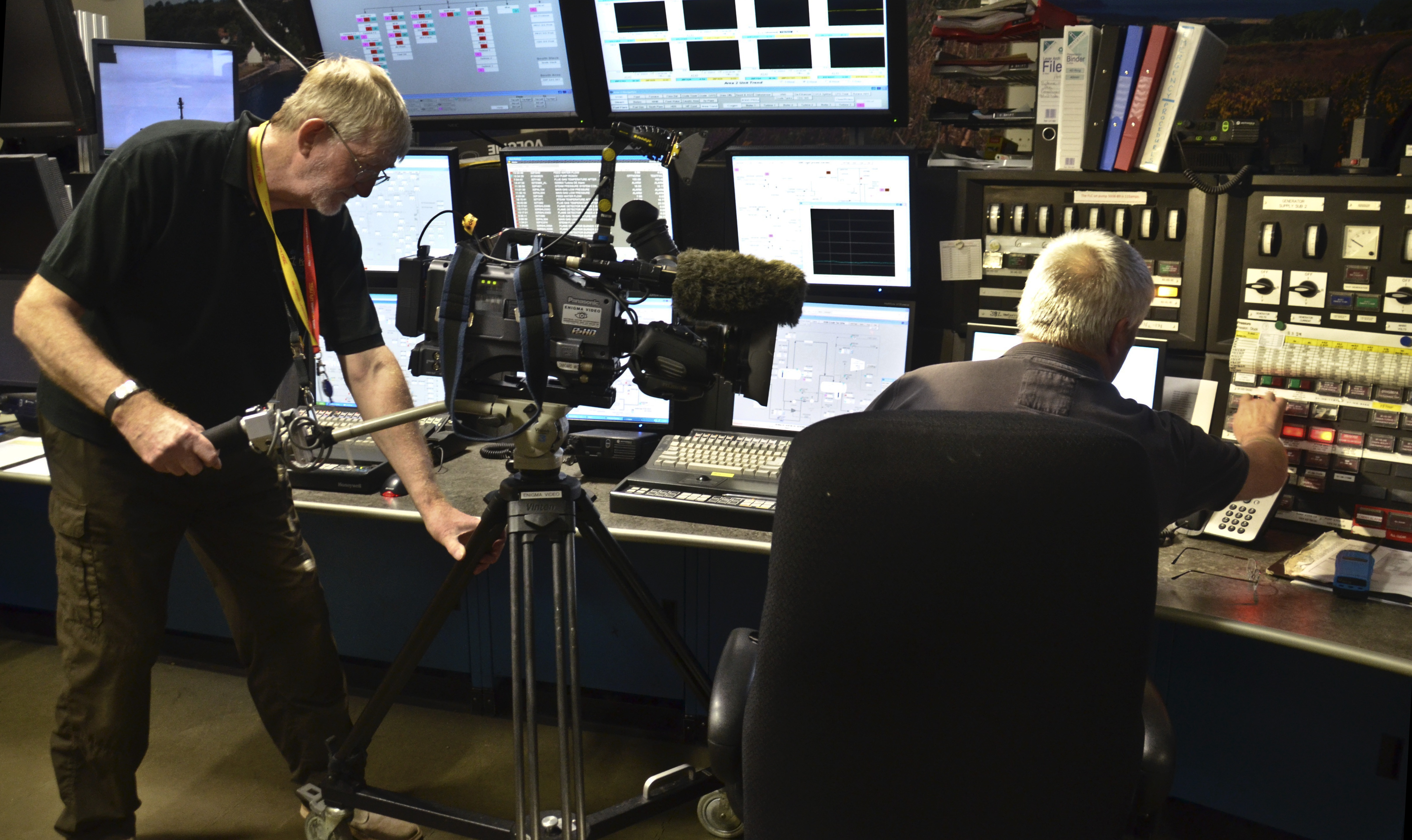
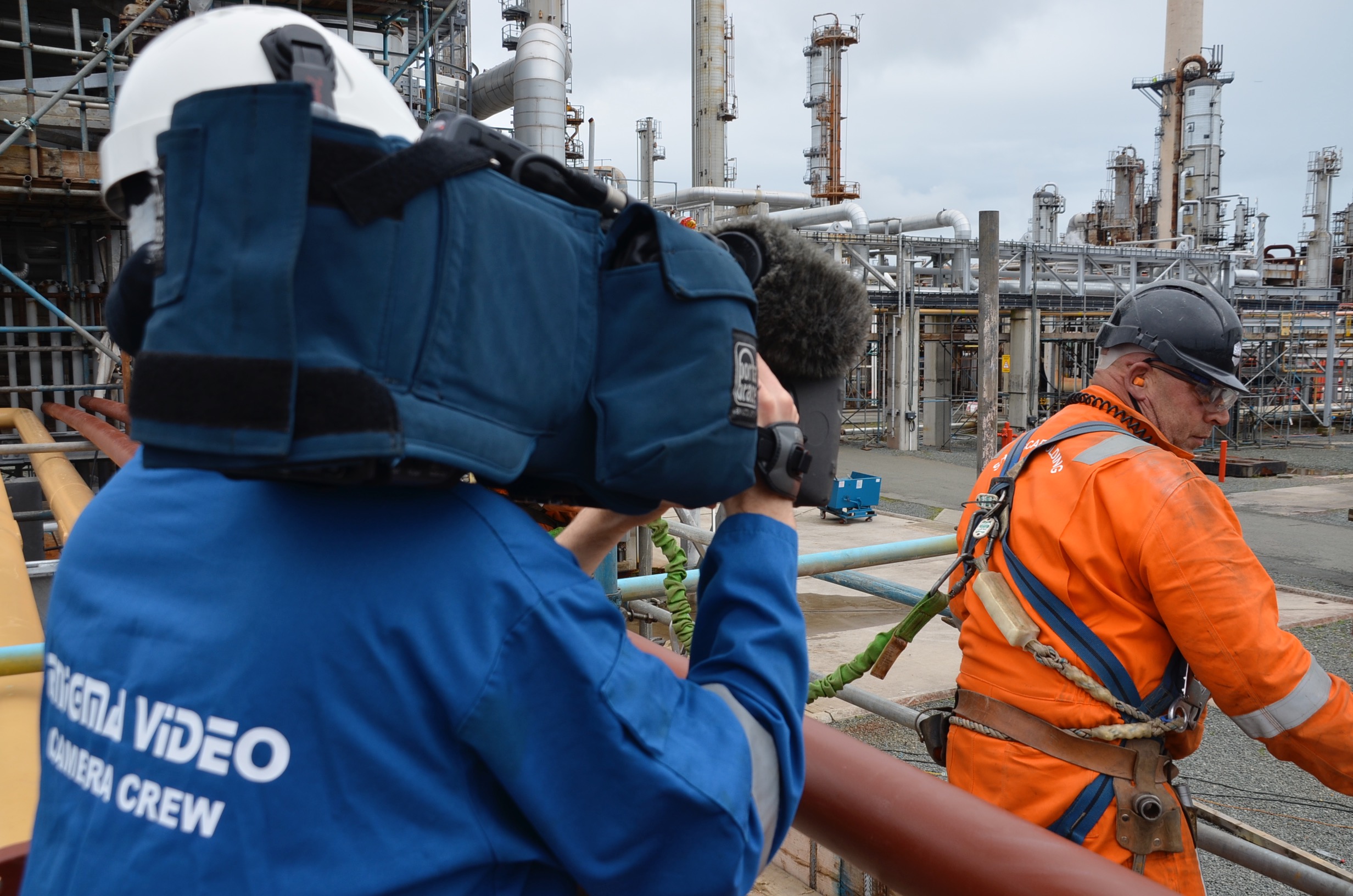
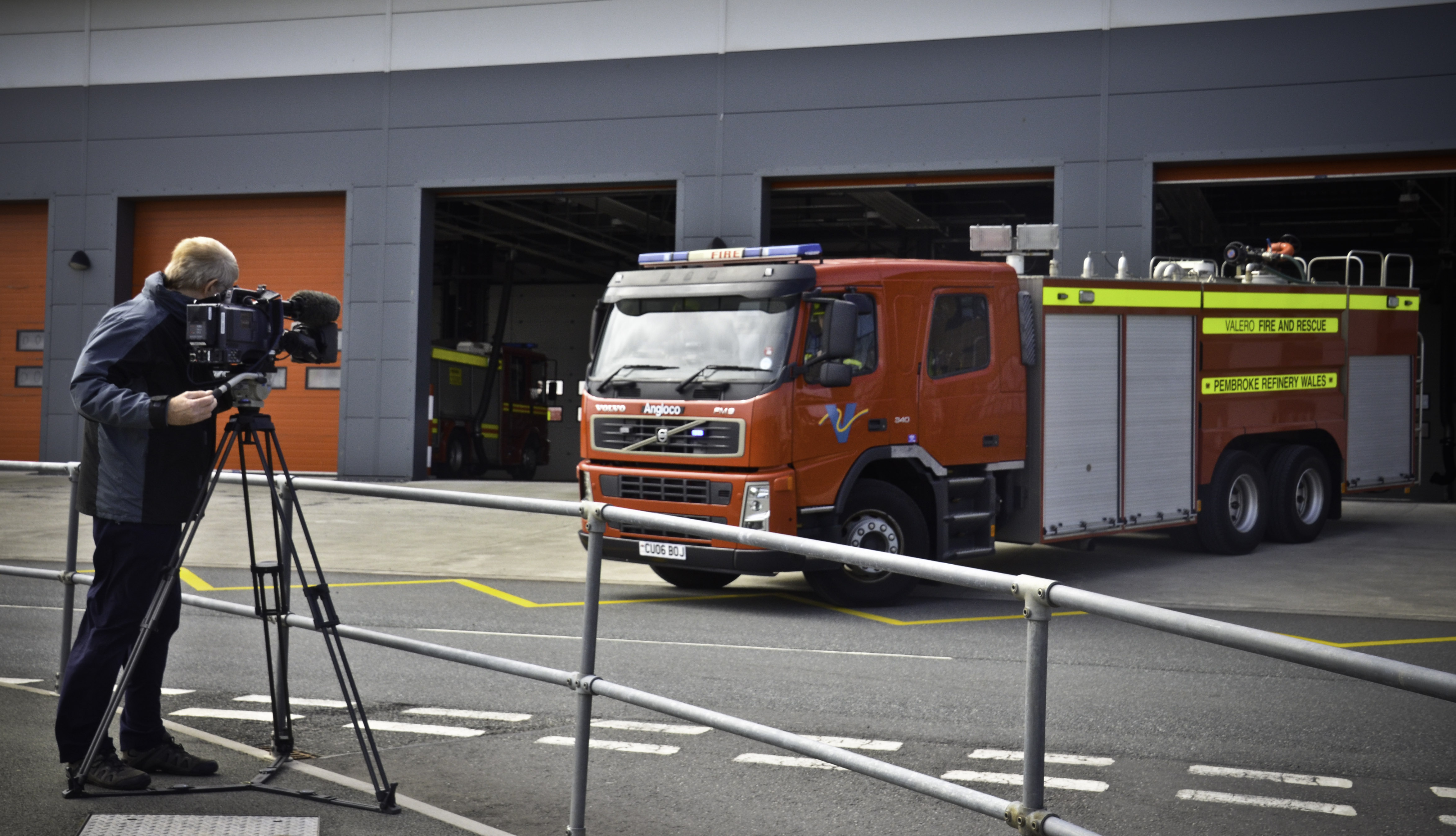
From almost the very beginning of my video making career I have been involved with filming fire, rescue and emergency video programmes. Over the last quarter century I have made many dozens of programmes about fire and rescue training, confined space training and breathing apparatus training, first-aid fire fighting, the use of extinguishers, stand-by man training, emergency exercises involving local and national emergency services and films for fire equipment manufacturers like Angus Fire and Drager and emergency training providers including the Joint Oil Industry Fire Forum.
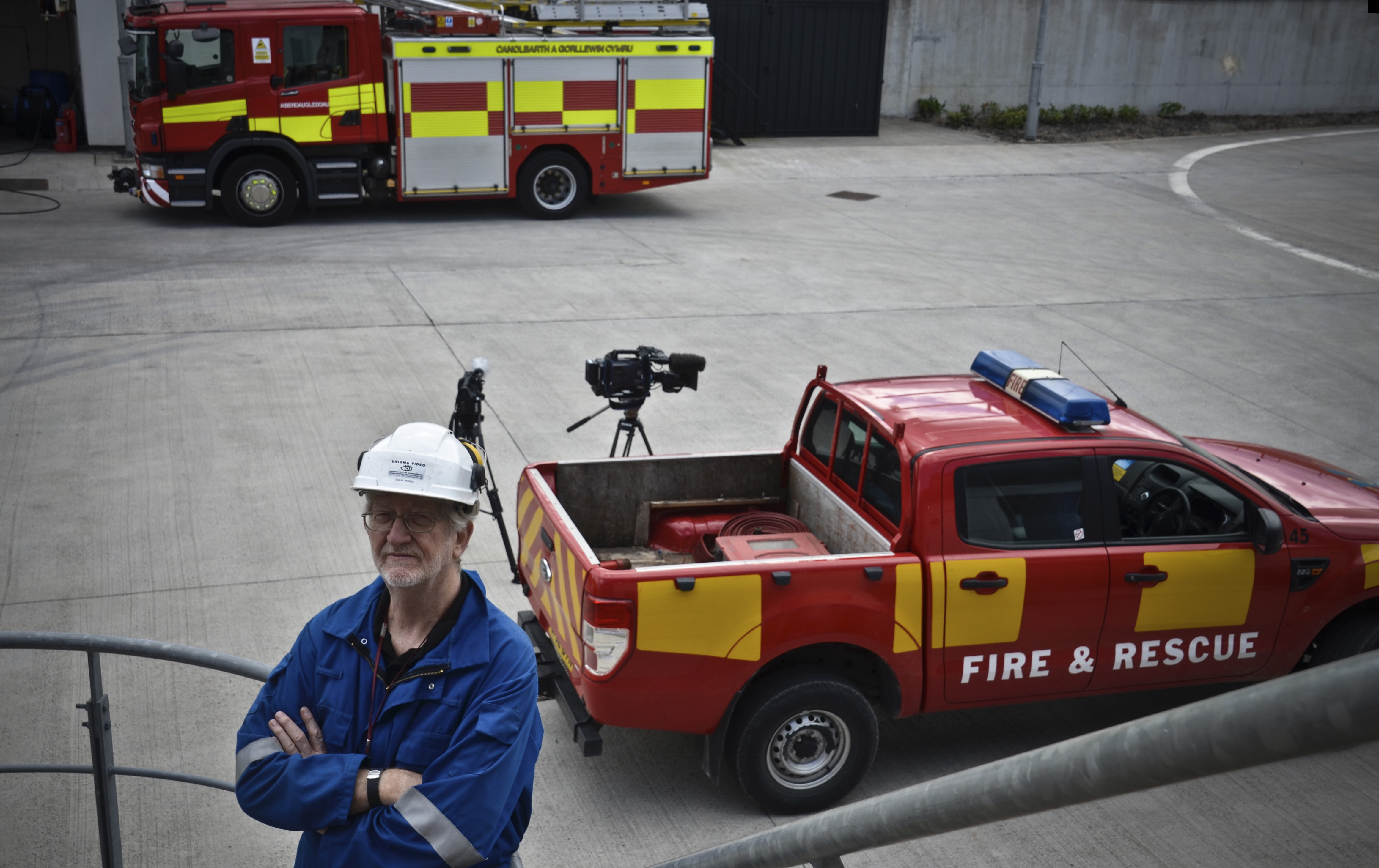
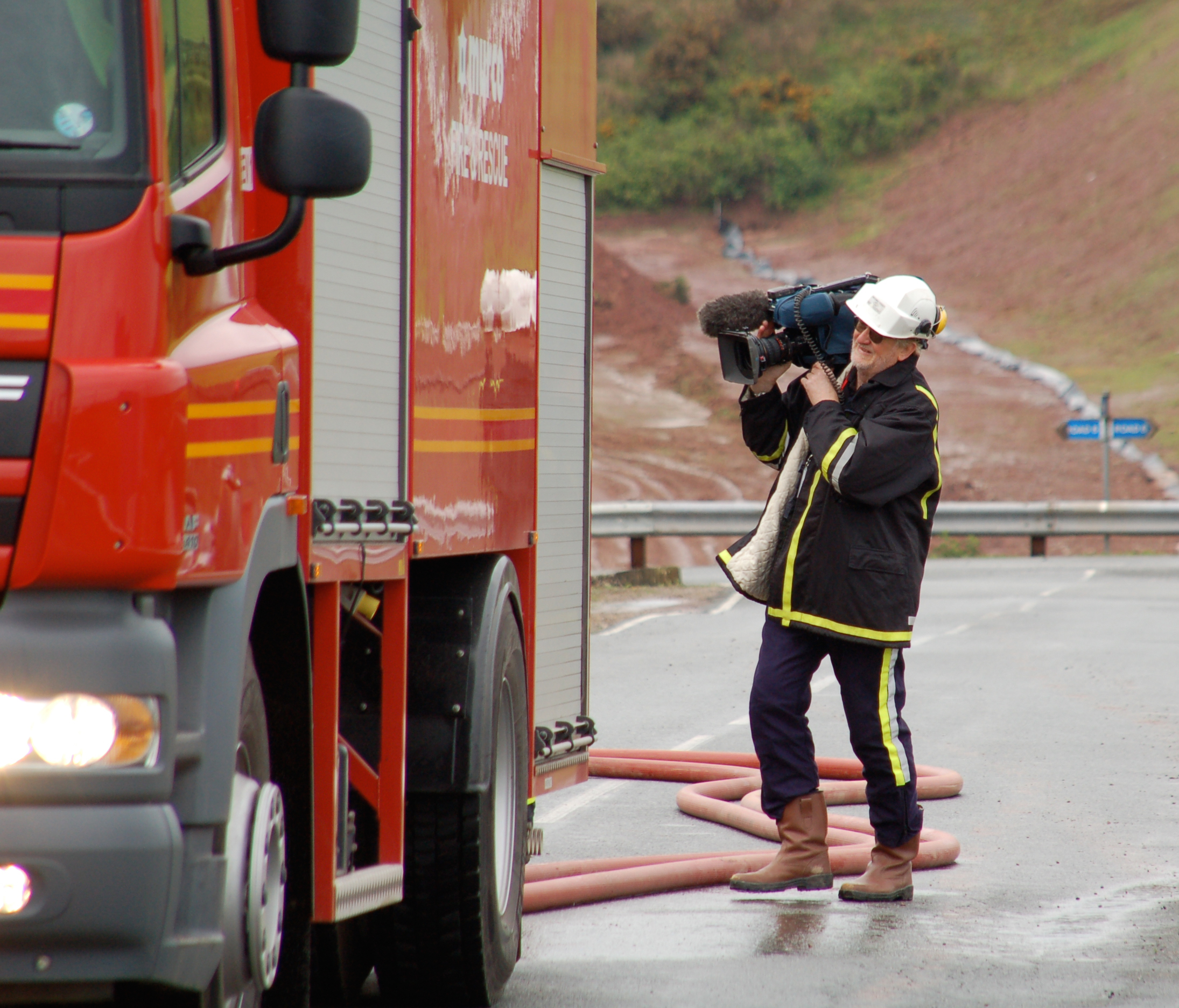
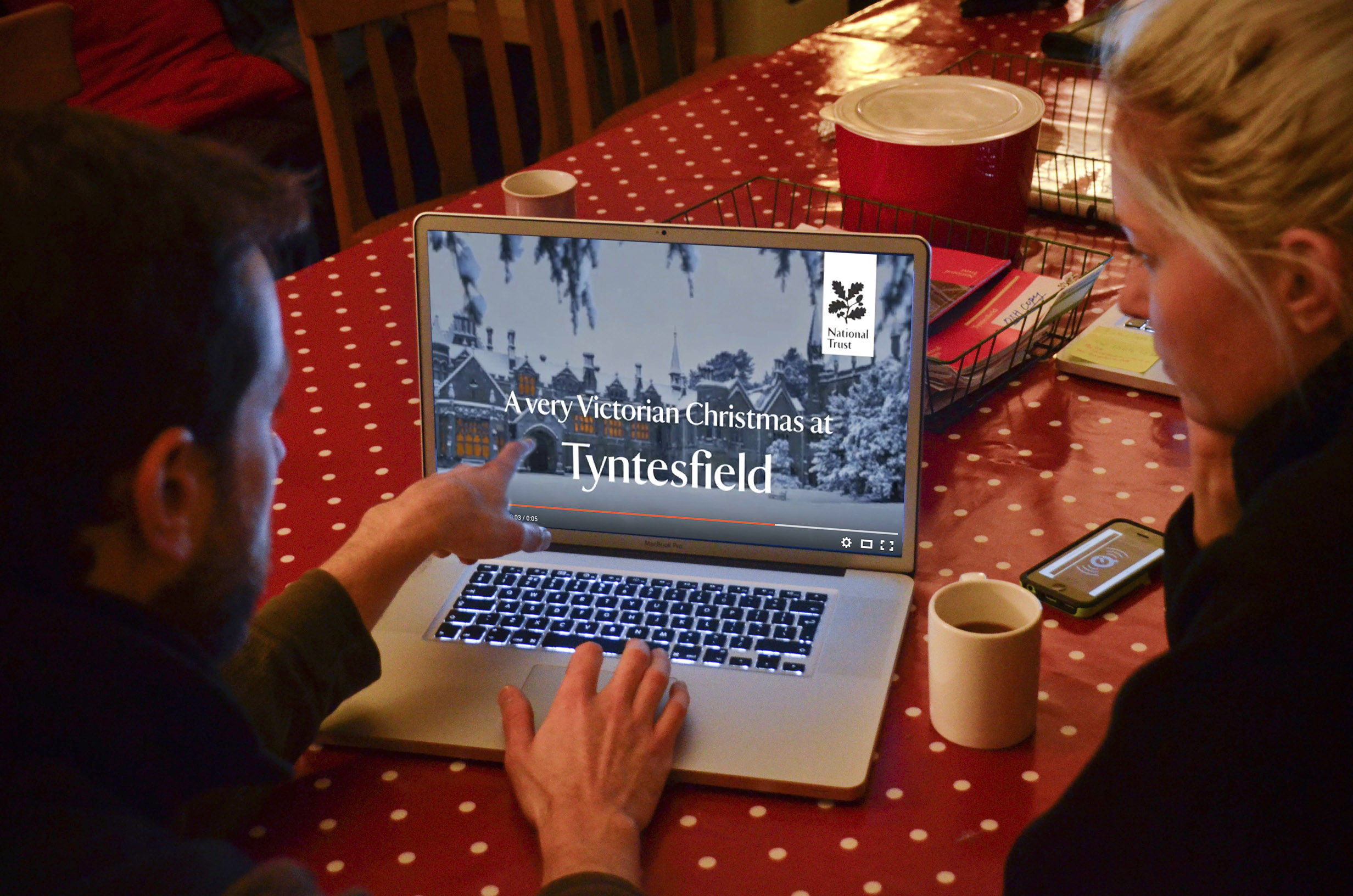
In November 2015 Enigma Video produced a short Christmas event trailer for the National Trust’s Tyntesfield House near Bristol. The trailer was directed by Tynetesfields Visitor Experience Manager Sally Doran and photographed by Enigma’s former camera assistant Joshua Richards. The brief was to produce a 2 minute short that captured the atmosphere of a Victorian family’s Christmas at home in the rambling gothic revival house. Sally’s concept was to shoot the whole sequence in one take as a walk through the house – from being greeted by the butler at the door to the end shot of the family matriarch at her writing desk addressing invitations to a ‘Very Victorian Christmas at Tyntesfield’.
Click on the picture to watch the trailer
The one-take shooting method created its own problems as the continuous movement of the camera and the performers had to be strictly choreographed to ensure that all the movements between the rooms meshed seamlessly and that the completed sequence matched the backing track to the second. Added to this was the director’s vision of creating a very smooth almost dream-like look to the photography. We shot on a DSLR rather than a full size video camera using a light weight Steadicam and ran our background music cue track at double speed. This made for a very interesting shoot as everyone involved had to move at double speed so that we could slow the sequence down in the edit to get the required smooth motion effect. In the month from the beginning of December to the new year, the video clocked up 30,000 views.